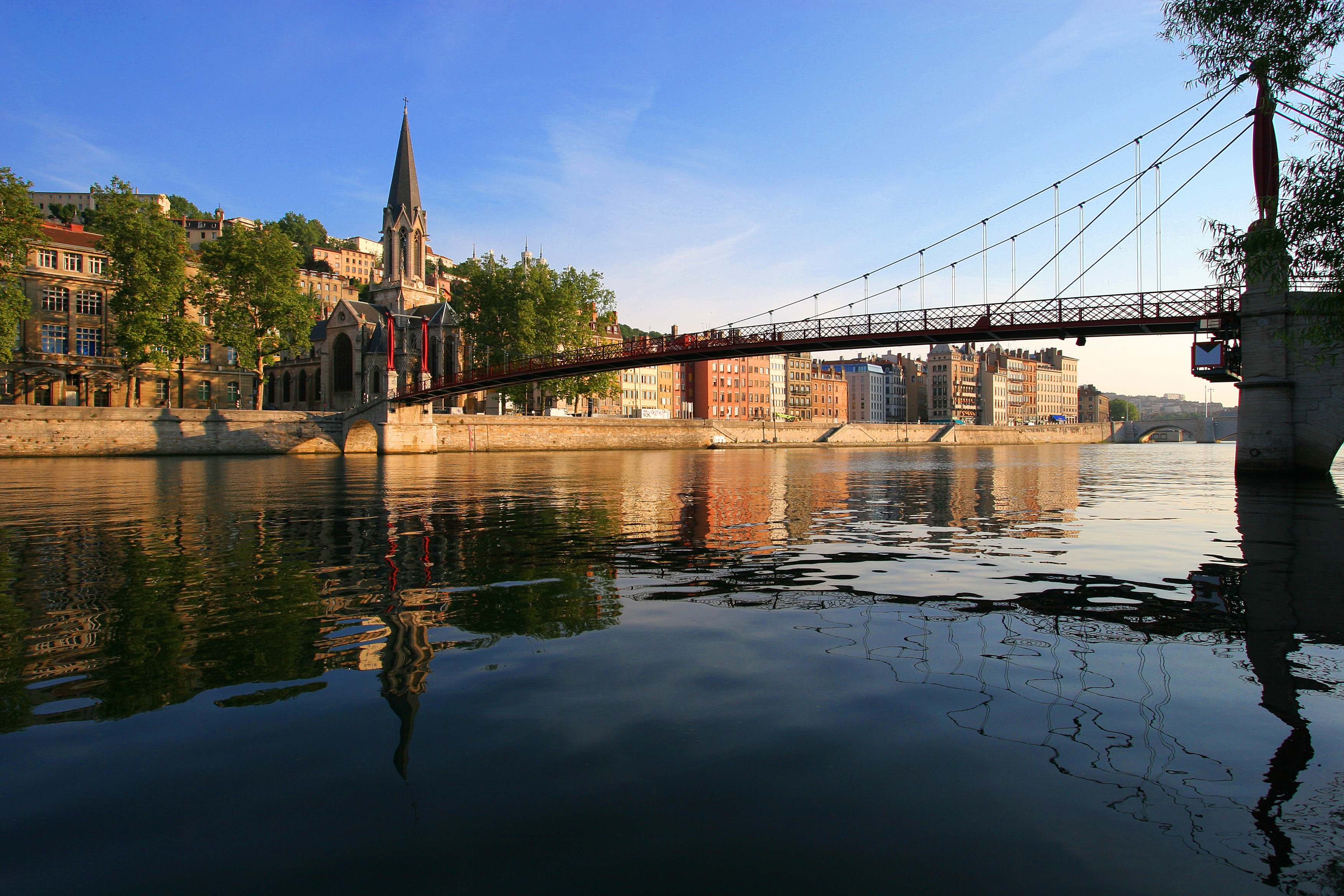
Spectacular South of France with London
Spectacular South of France with London
Cruise overview
WHY BOOK WITH US?
- ✔ The Deluxe Cruises’ team has extensive experience in ultra-luxury cruising.
- ✔ Call now to speak to our helpful and experienced Cruise Concierge team.
- ✔ Enjoy our Unique Deluxe Cruises Bonus for substantial savings.
- ✔ Our team will tailor your holiday to your exacting requirements.
- ✔ As agents, we work under the protection of each cruise lines ABTA / ATOL licences
About Lyon
Lyon, the capital city in France’s Auvergne-Rhône-Alpes region, sits at the junction of the Rhône and Saône rivers. Its center reflects 2,000 years of history from the Roman Amphithéâtre des Trois Gaules, medieval and Renaissance architecture in Vieux (Old) Lyon, to the modern Confluence district on Presqu'île peninsula. Traboules, covered passageways between buildings, connect Vieux Lyon and La Croix-Rousse hill.


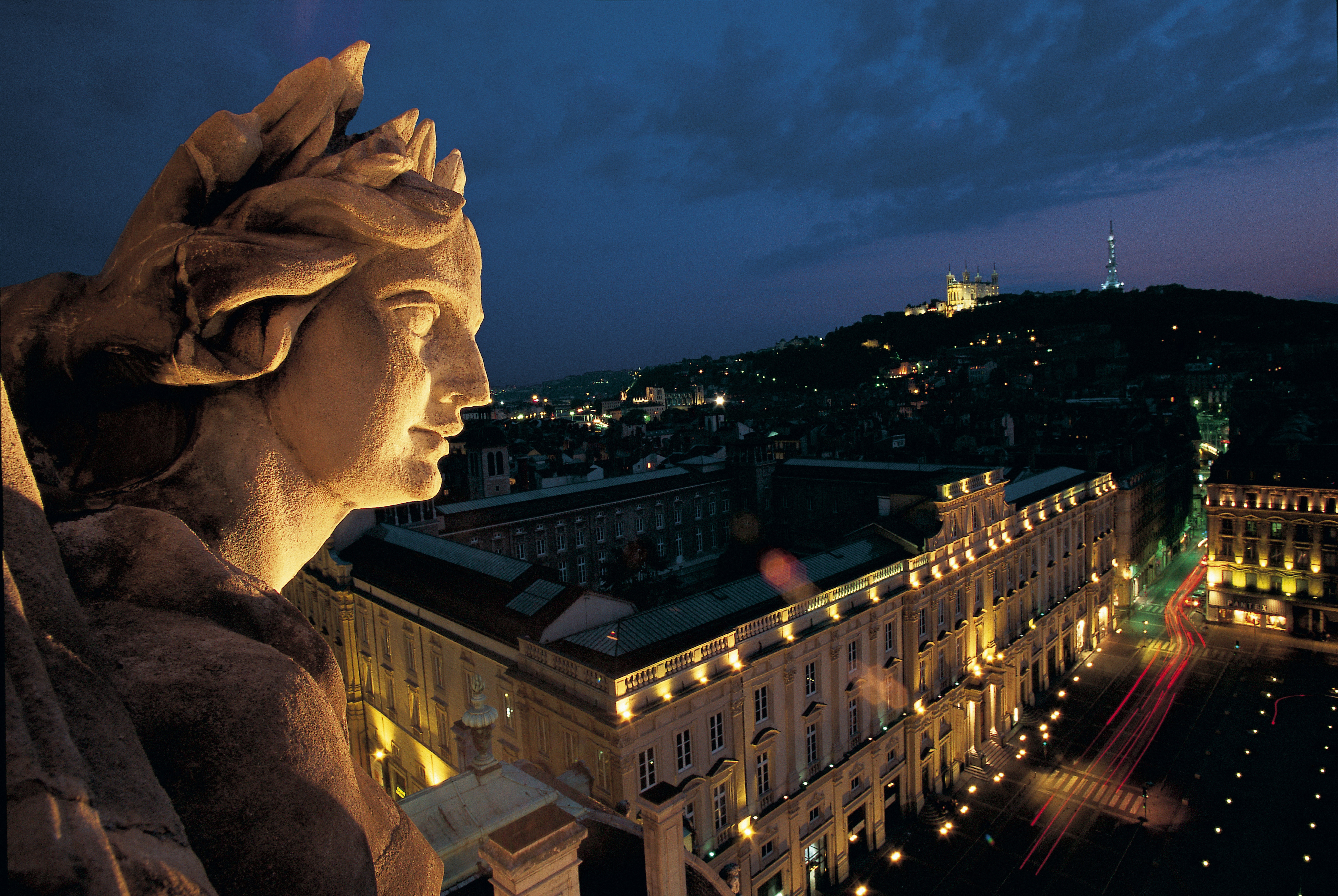


About Lyon
Lyon, the capital city in France’s Auvergne-Rhône-Alpes region, sits at the junction of the Rhône and Saône rivers. Its center reflects 2,000 years of history from the Roman Amphithéâtre des Trois Gaules, medieval and Renaissance architecture in Vieux (Old) Lyon, to the modern Confluence district on Presqu'île peninsula. Traboules, covered passageways between buildings, connect Vieux Lyon and La Croix-Rousse hill.





About Chalon-sur-Saône
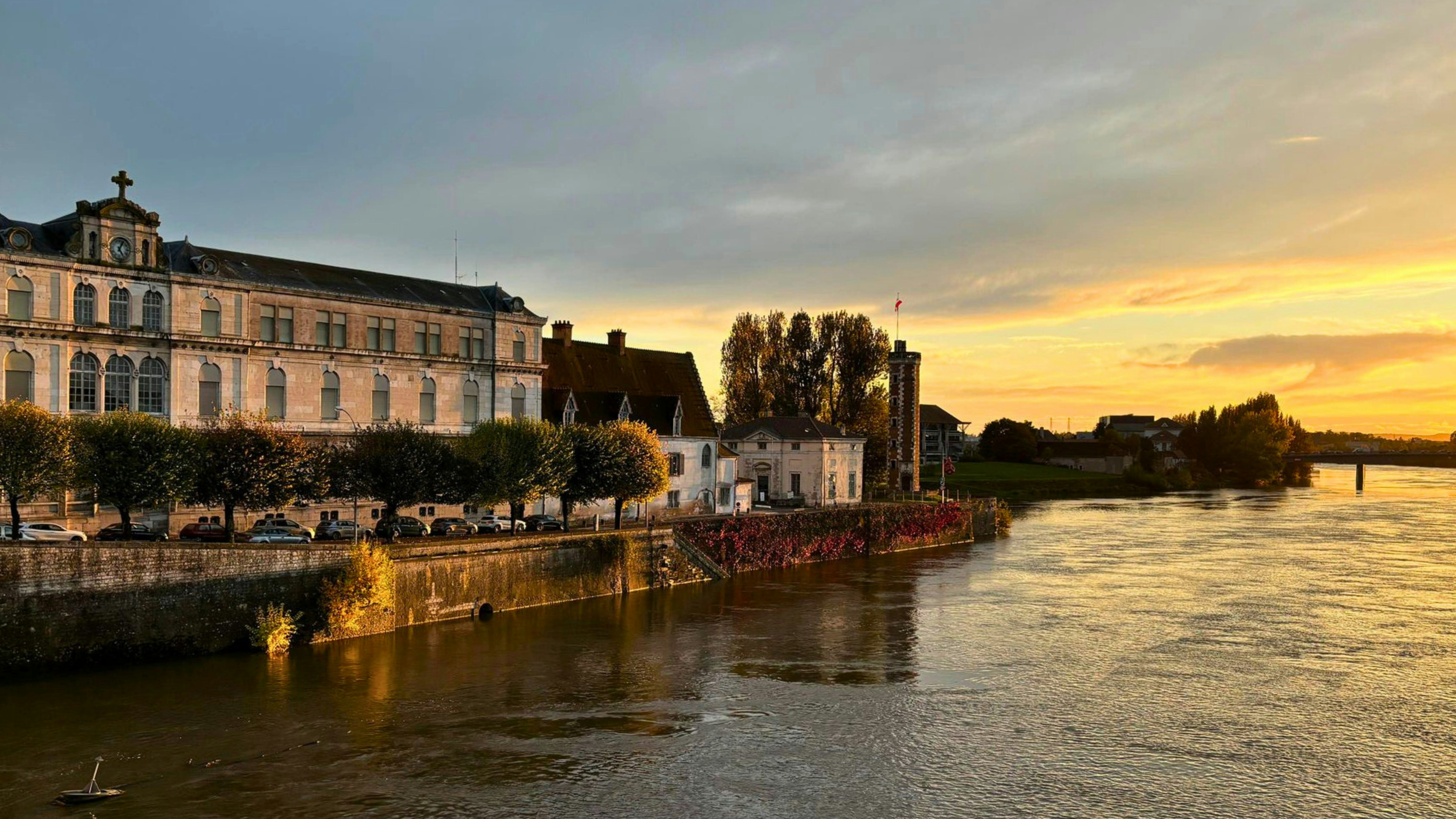
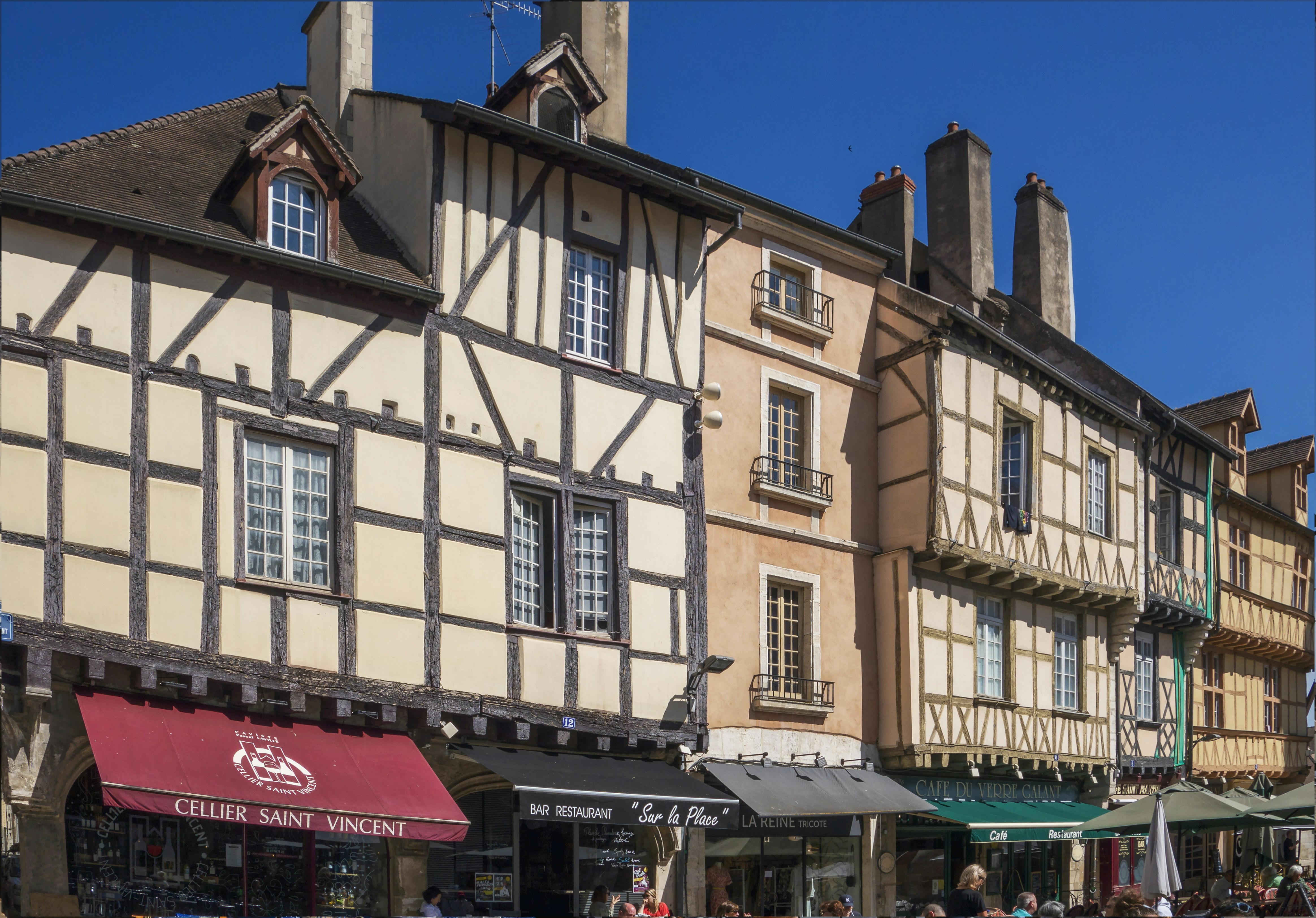
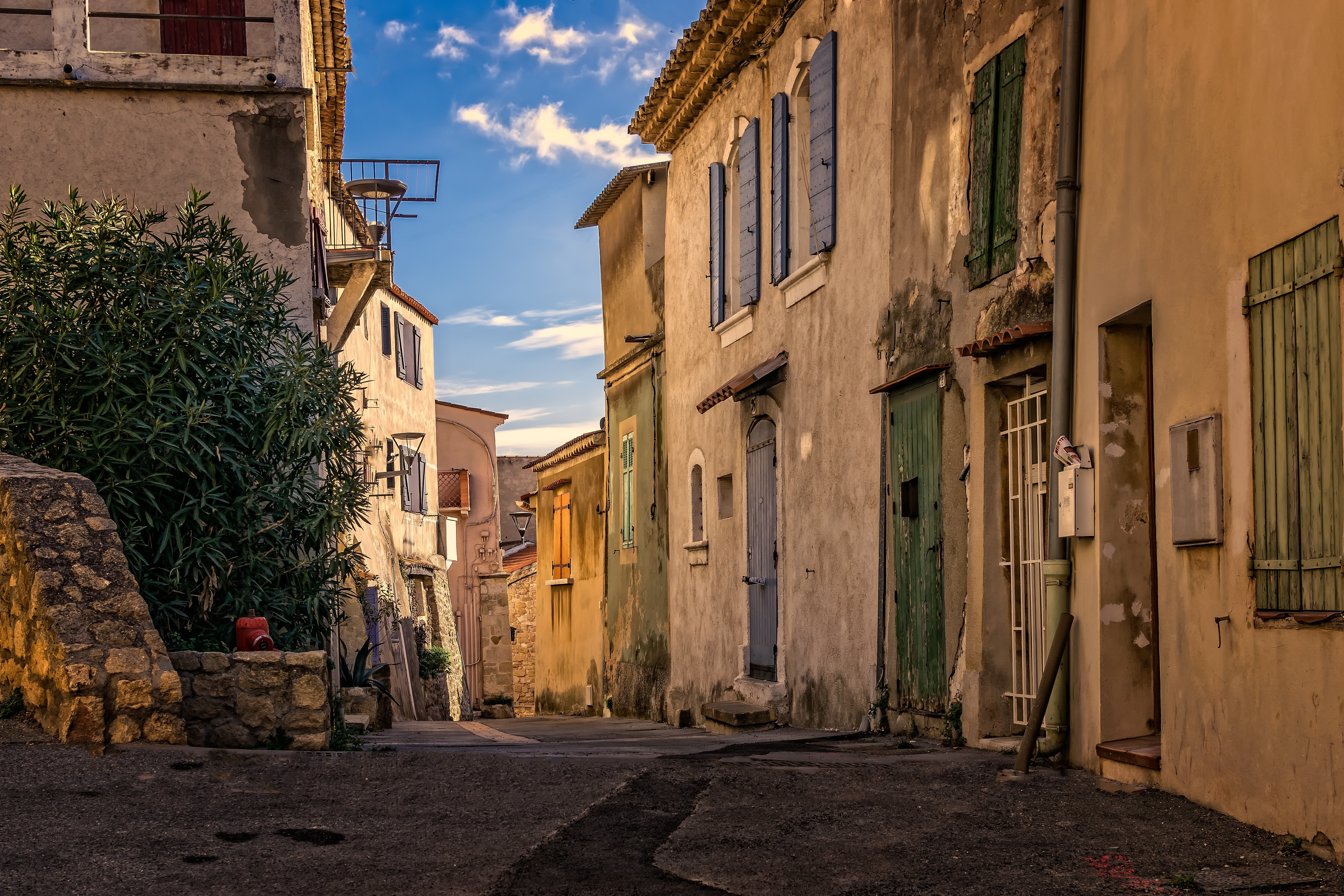
About Chalon-sur-Saône



About Tournus
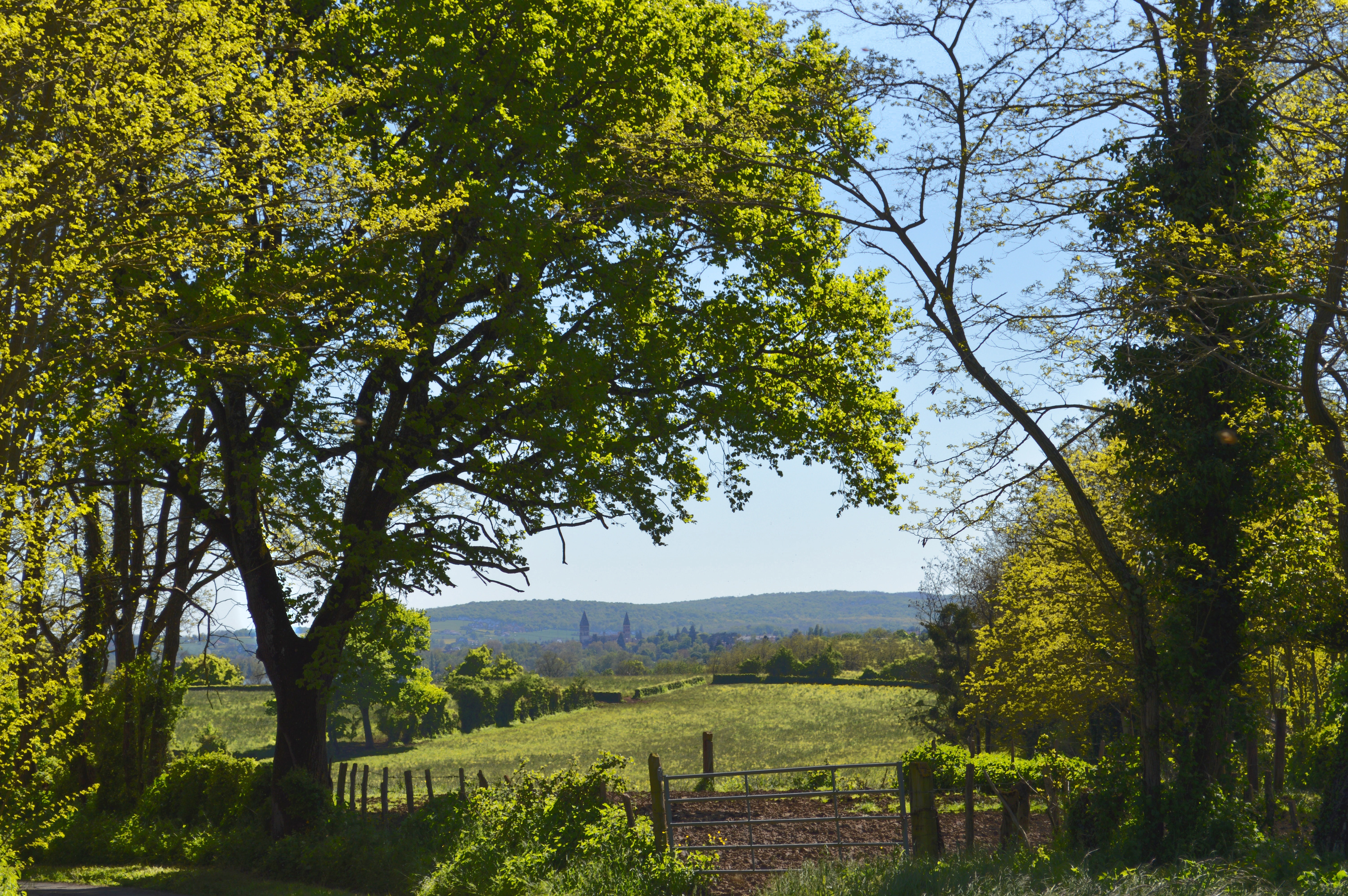
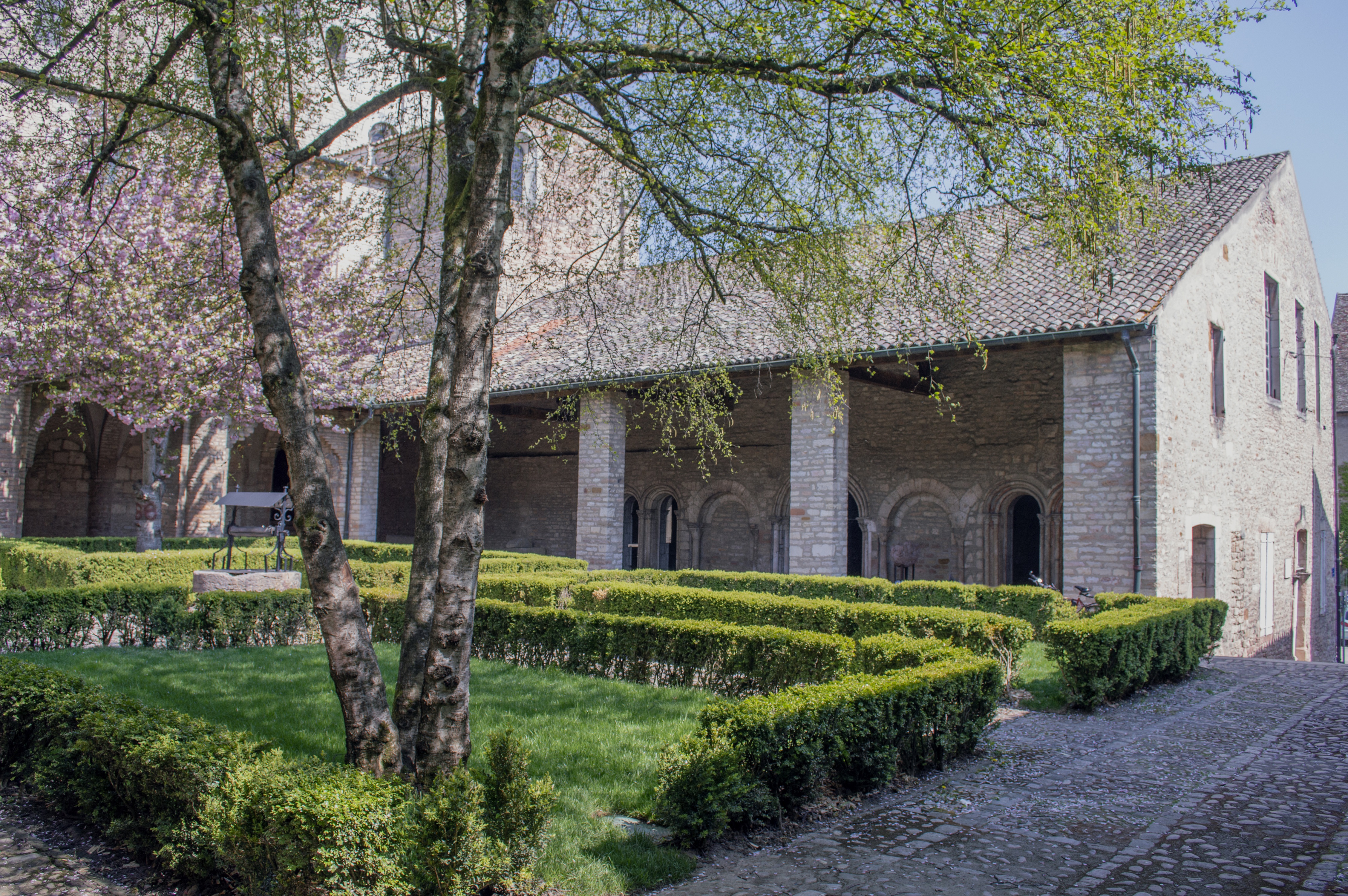
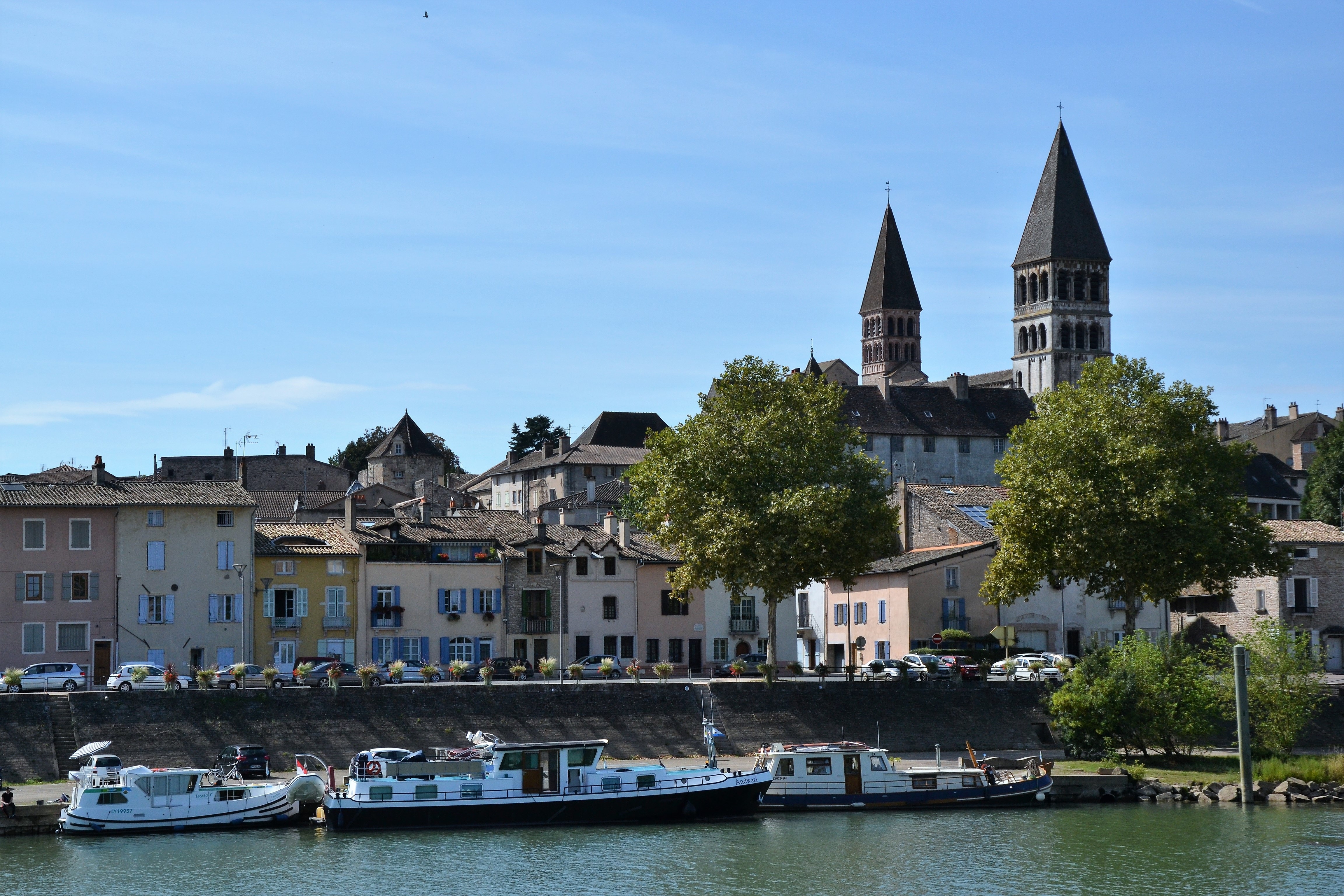
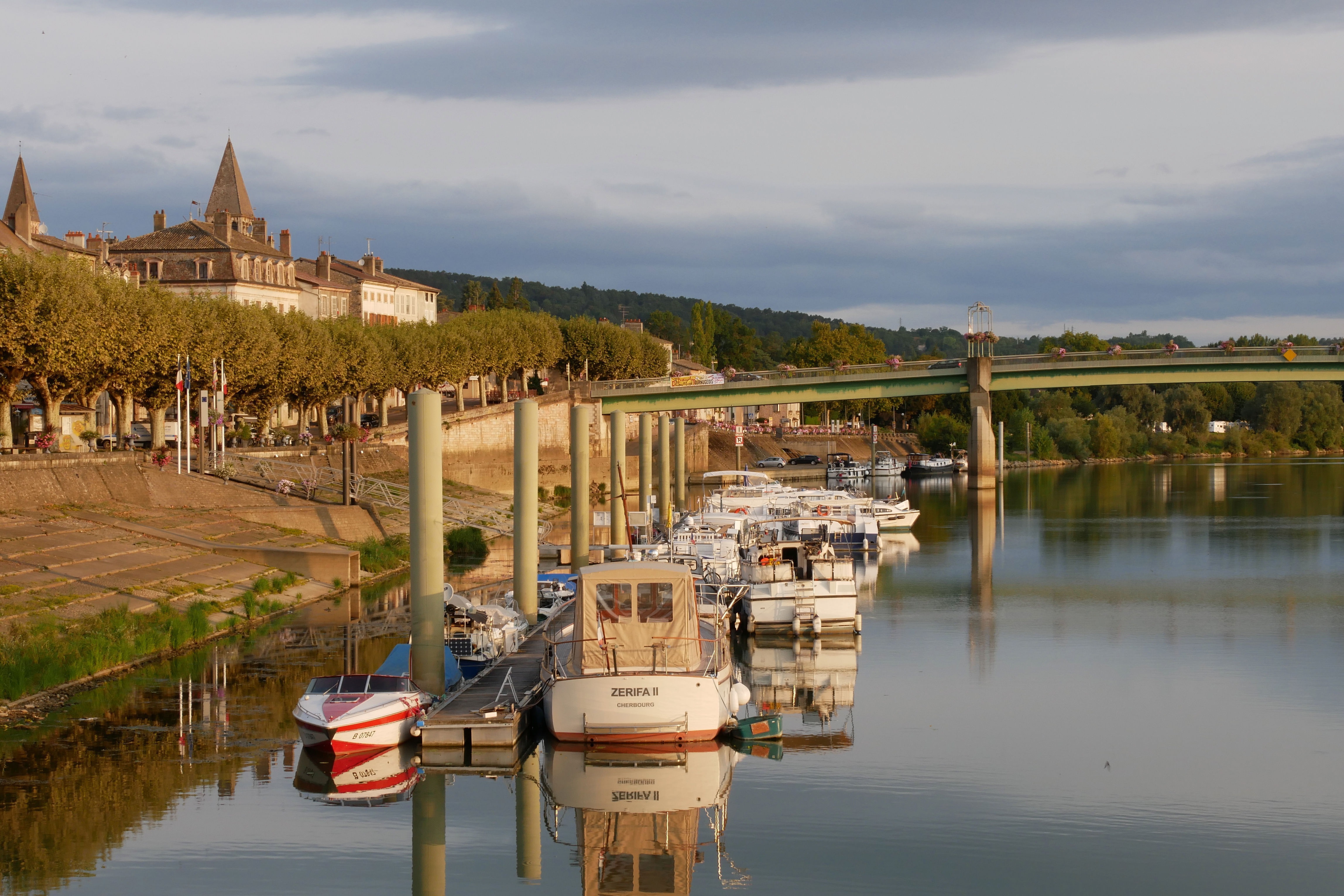
About Tournon-sur-Rhône
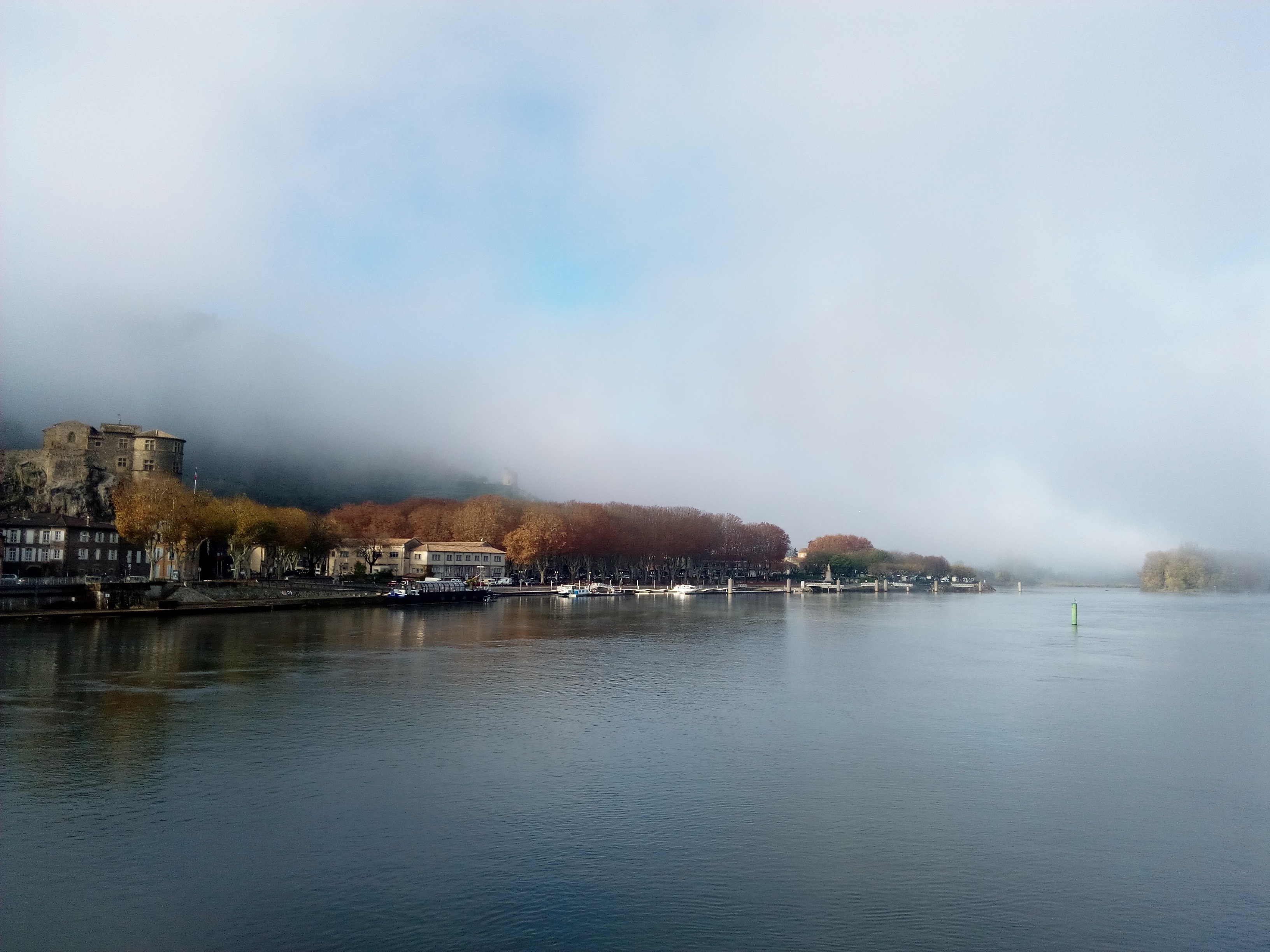
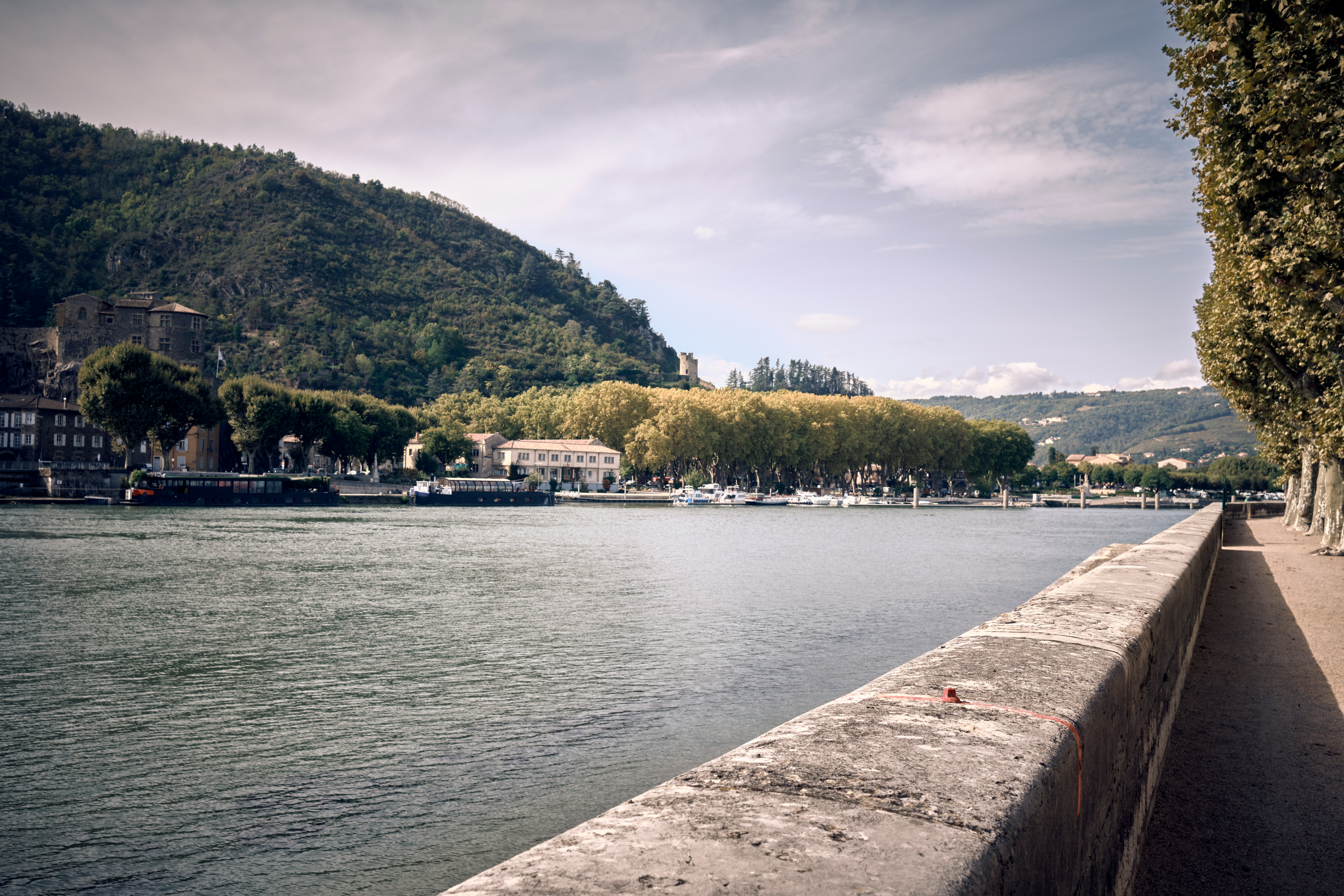
About Avignon
Avignon, France, is a historic city in Provence famed for its stunning medieval architecture. Dominated by the impressive Palais des Papes, a grand papal palace, and the iconic Pont Saint-Bénézet bridge, Avignon offers a rich cultural heritage. Its charming streets, vibrant markets, and annual theater festival, the Festival d'Avignon, add to its allure. Surrounded by picturesque vineyards and the Rhône River, Avignon blends history with a lively contemporary atmosphere, making it a must-visit for history enthusiasts and culture seekers.
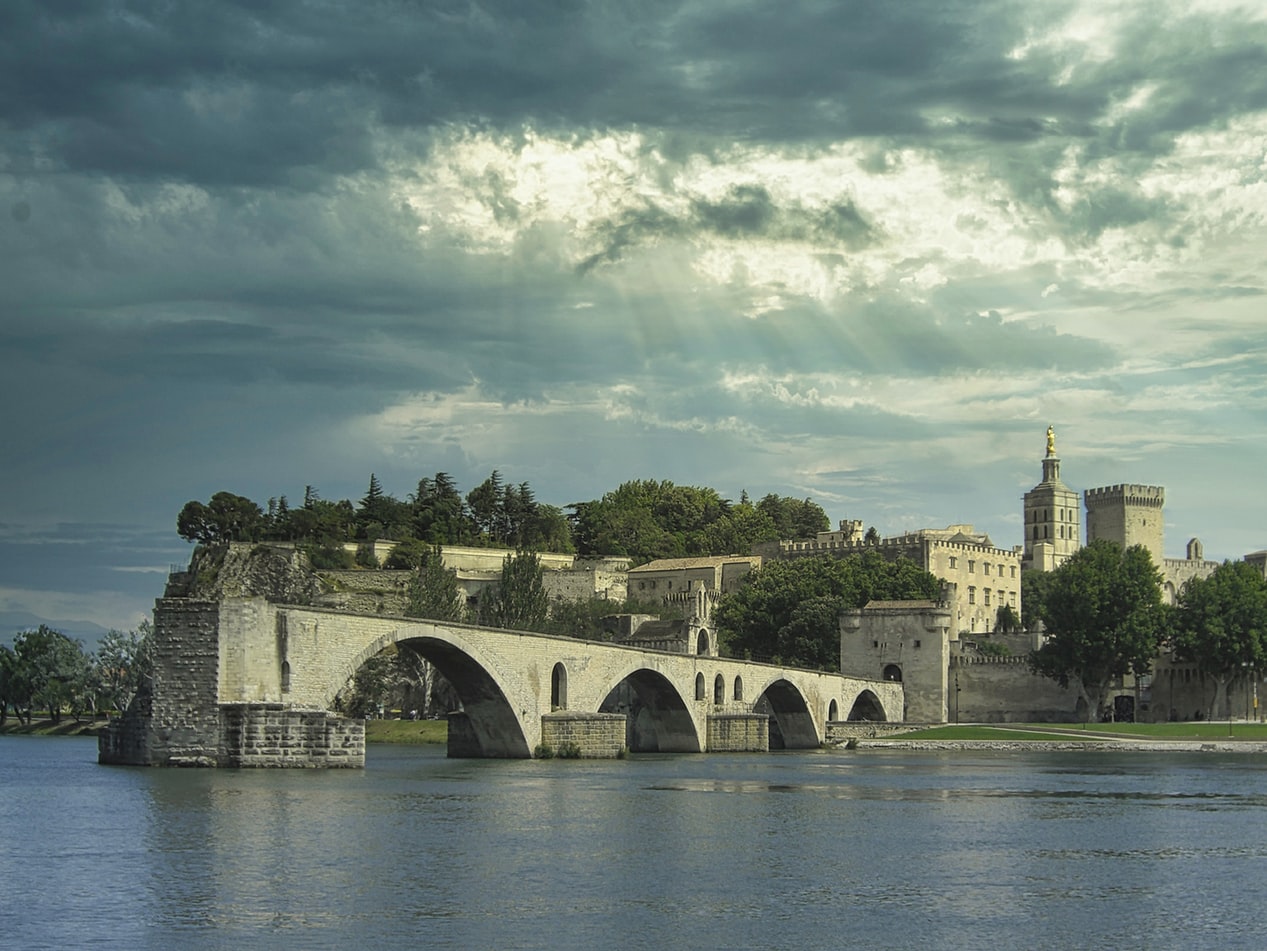
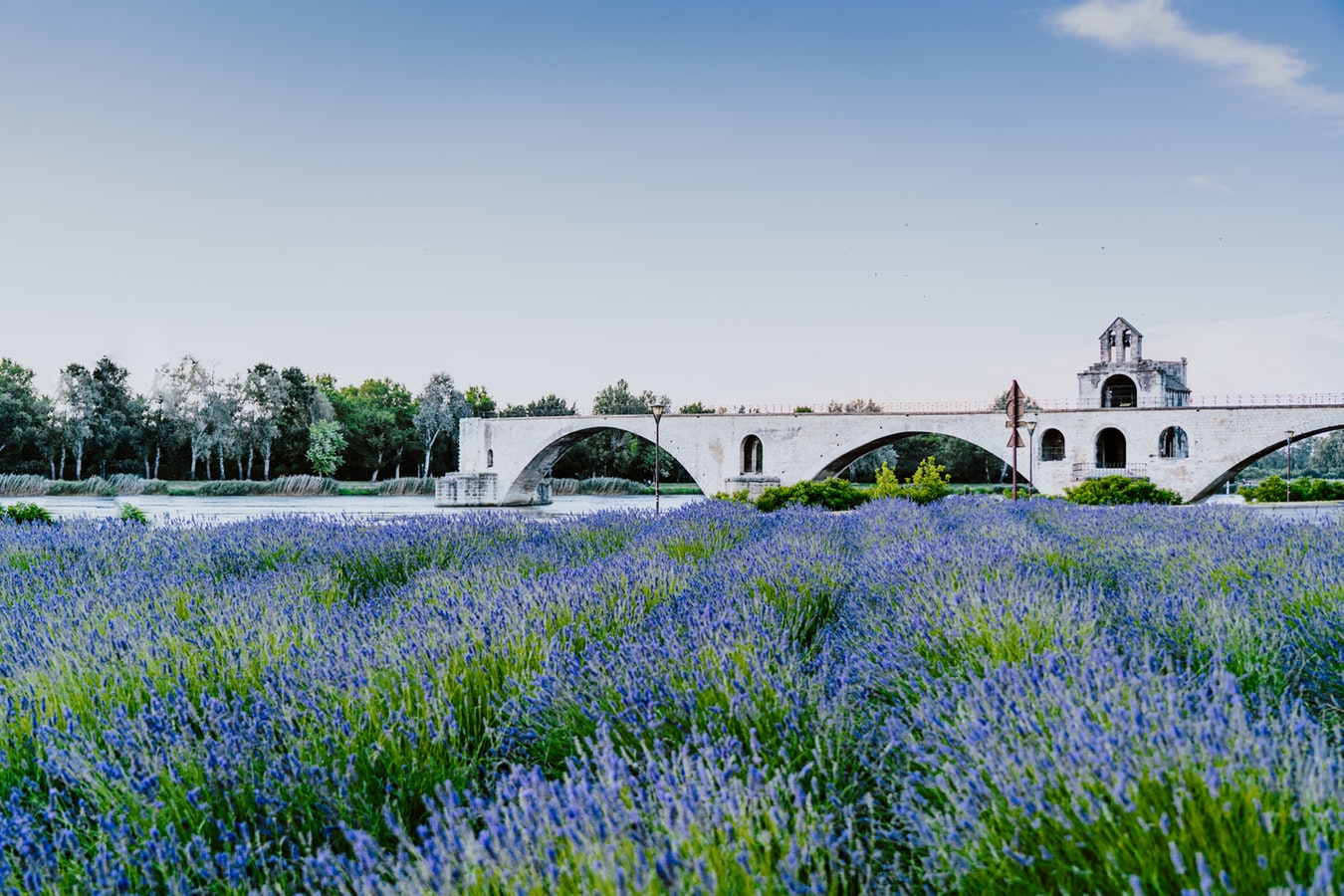
About Avignon
Avignon, France, is a historic city in Provence famed for its stunning medieval architecture. Dominated by the impressive Palais des Papes, a grand papal palace, and the iconic Pont Saint-Bénézet bridge, Avignon offers a rich cultural heritage. Its charming streets, vibrant markets, and annual theater festival, the Festival d'Avignon, add to its allure. Surrounded by picturesque vineyards and the Rhône River, Avignon blends history with a lively contemporary atmosphere, making it a must-visit for history enthusiasts and culture seekers.


About Arles
Arles, France, is a historic city in Provence renowned for its Roman heritage and artistic legacy. The ancient amphitheater and the Roman Theater are standout landmarks. Arles also boasts charming streets and vibrant markets, reflecting its rich cultural life. Known for its connection to Vincent van Gogh, the city features scenes immortalized in his paintings. The blend of historical architecture, vibrant local culture, and picturesque landscapes makes Arles a captivating destination for history buffs and art enthusiasts alike.


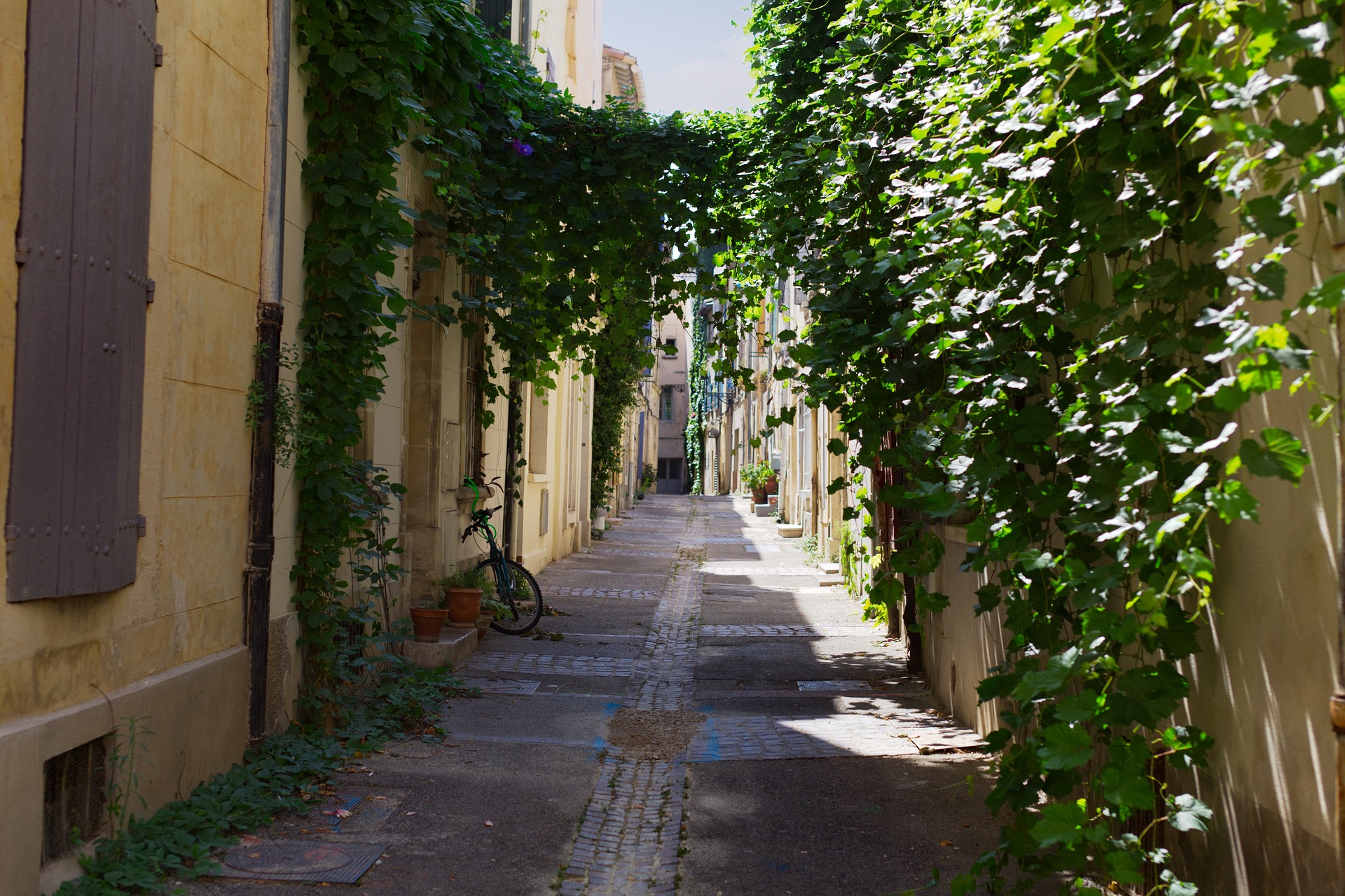
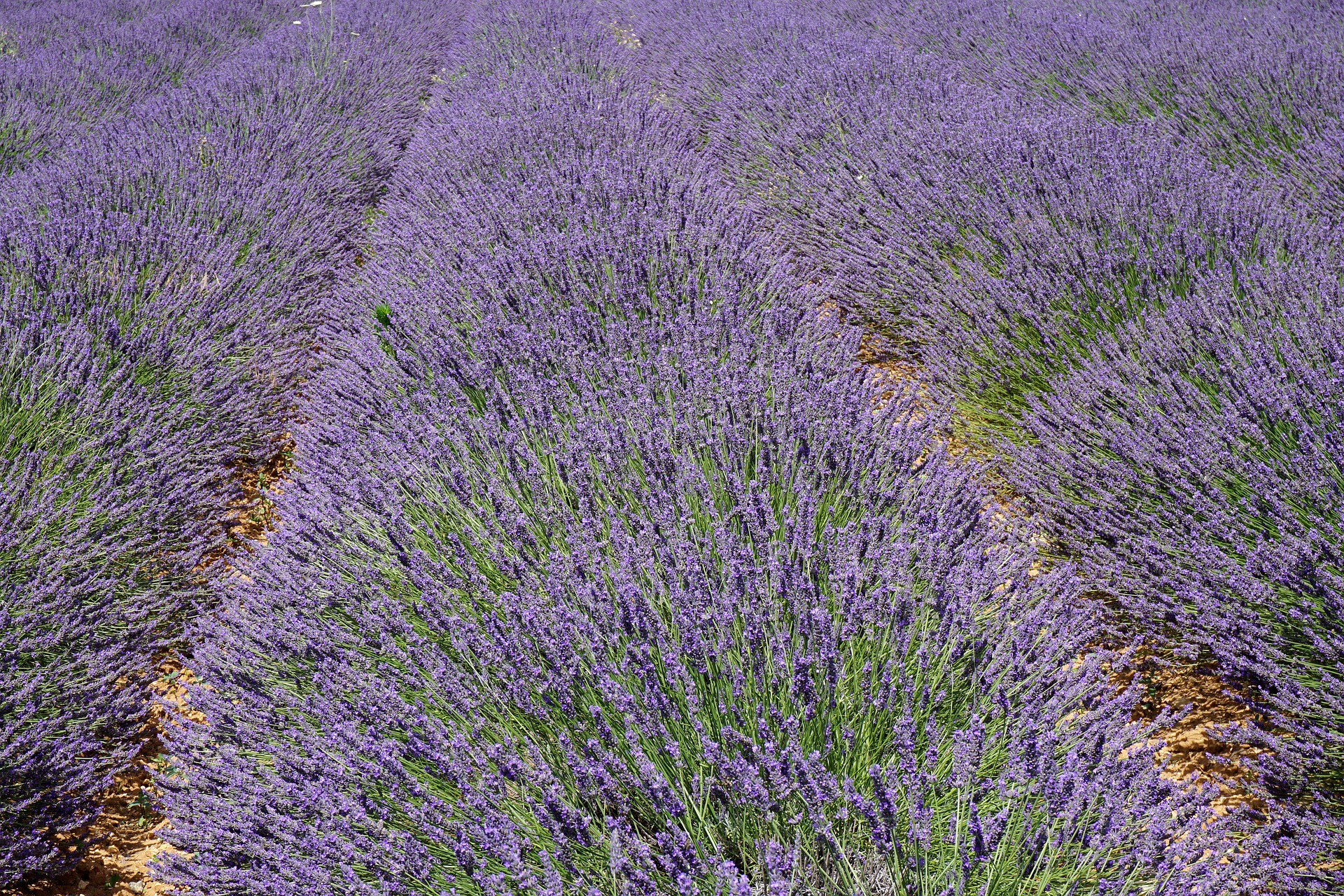
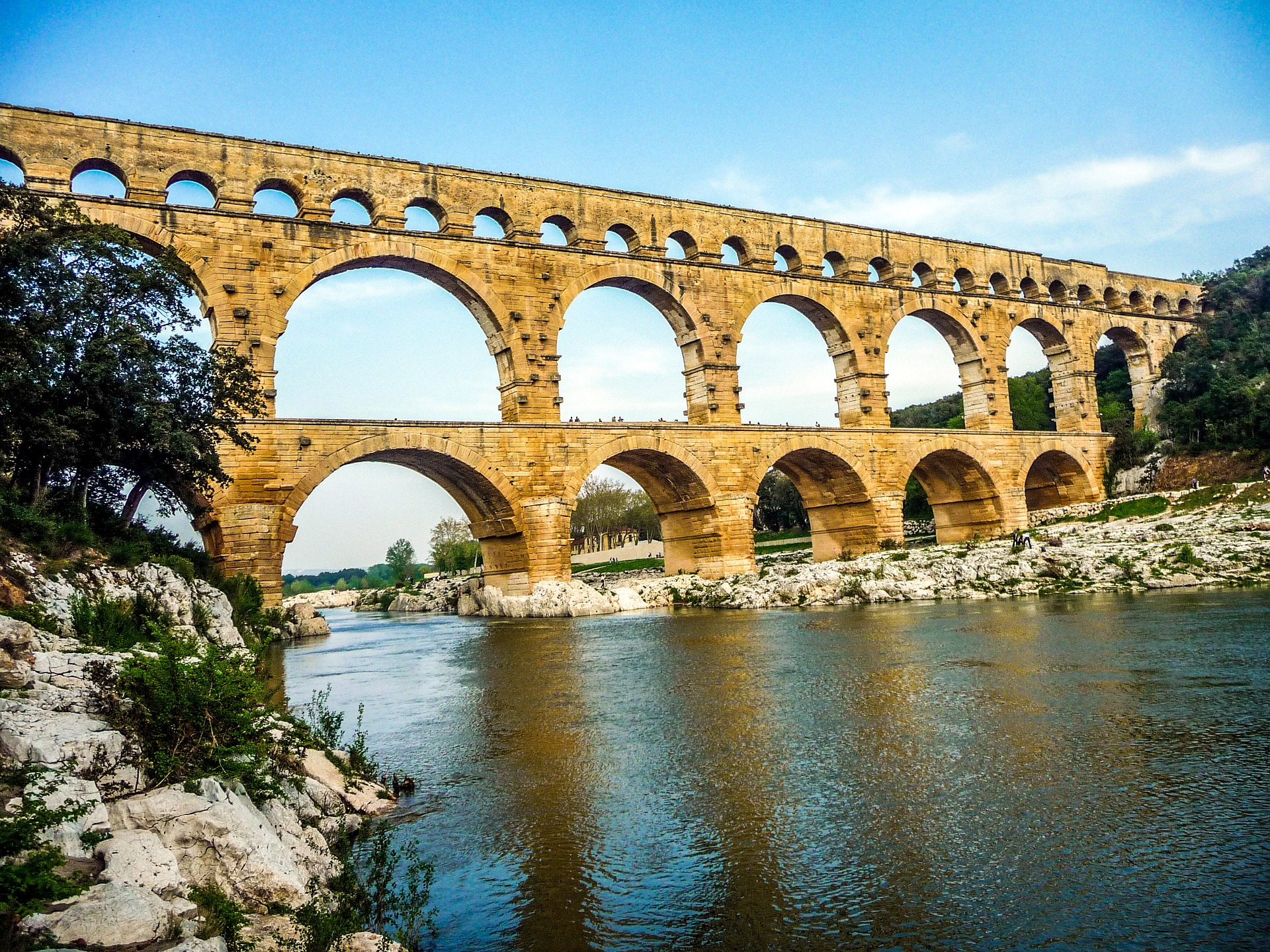

About Viviers
Viviers, France, is a charming medieval town in the Rhône-Alpes region, renowned for its well-preserved historical architecture. Nestled on the banks of the Rhône River, it features narrow, winding streets, ancient stone houses, and the impressive Saint-Vincent Cathedral. The town's Roman and medieval heritage is evident in its old ramparts and historic buildings. Viviers' tranquil atmosphere and picturesque surroundings offer a glimpse into the past, making it a delightful destination for history lovers and those seeking a serene escape.
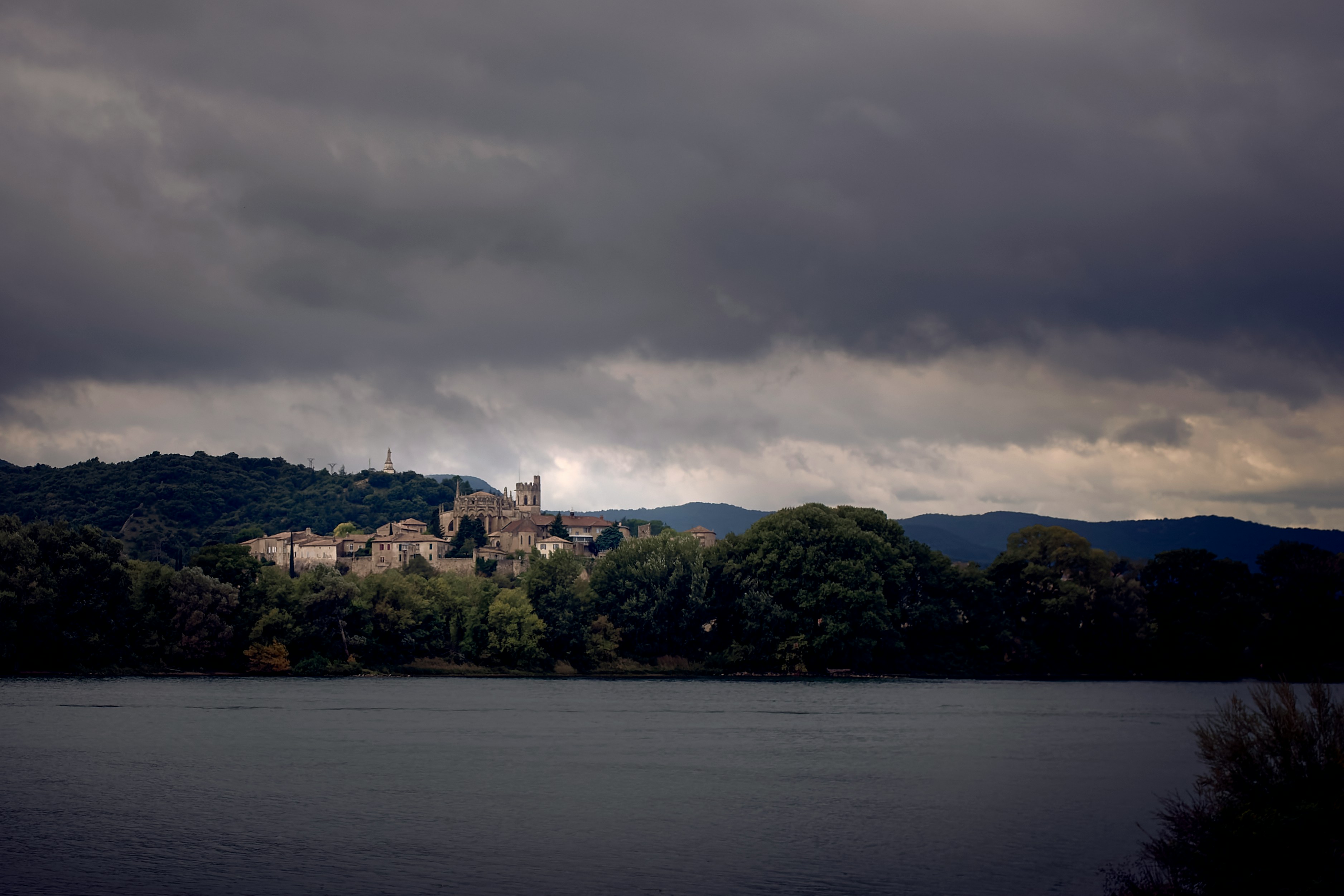
About Lyon
Lyon, the capital city in France’s Auvergne-Rhône-Alpes region, sits at the junction of the Rhône and Saône rivers. Its center reflects 2,000 years of history from the Roman Amphithéâtre des Trois Gaules, medieval and Renaissance architecture in Vieux (Old) Lyon, to the modern Confluence district on Presqu'île peninsula. Traboules, covered passageways between buildings, connect Vieux Lyon and La Croix-Rousse hill.





About Lyon
Lyon, the capital city in France’s Auvergne-Rhône-Alpes region, sits at the junction of the Rhône and Saône rivers. Its center reflects 2,000 years of history from the Roman Amphithéâtre des Trois Gaules, medieval and Renaissance architecture in Vieux (Old) Lyon, to the modern Confluence district on Presqu'île peninsula. Traboules, covered passageways between buildings, connect Vieux Lyon and La Croix-Rousse hill.





About Lyon
Lyon, the capital city in France’s Auvergne-Rhône-Alpes region, sits at the junction of the Rhône and Saône rivers. Its center reflects 2,000 years of history from the Roman Amphithéâtre des Trois Gaules, medieval and Renaissance architecture in Vieux (Old) Lyon, to the modern Confluence district on Presqu'île peninsula. Traboules, covered passageways between buildings, connect Vieux Lyon and La Croix-Rousse hill.





About London (Greenwich)
About 8 miles downstream—which means seaward, to the east—from central London, Greenwich is a small borough that looms large across the world. Once the seat of British naval power, it is not only home to the Old Royal Observatory, which measures time for our entire planet, but also the Greenwich Meridian, which divides the world into two—you can stand astride it with one foot in either hemisphere. Bear in mind that the journey to Greenwich is an event in itself. In a rush, you can take the driverless DLR train—but many opt for arriving by boat along the Thames. This way, you glide past famous sights on the London skyline (there’s a guaranteed spine chill on passing the Tower) and ever-changing docklands, and there’s usually a chirpy Cock-er-ney navigator enlivening the journey with his fun commentary. A visit to Greenwich feels like a trip to a rather elegant seaside town—albeit one with more than its fair share of historic sites. The grandiose Old Royal Naval Hospital, designed by Christopher Wren, was originally a home for veteran sailors. Today it’s a popular visitor attraction, with a more glamorous second life as one of the most widely used movie locations in Britain. Greenwich was originally home to one of England's finest Tudor palaces, and the birthplace of Henry VIII, Elizabeth I, and Mary I. Inigo Jones built what is considered the first "classical" building in England in 1616—the Queen's House, which now houses a collection of fine art. Britain was the world’s preeminent naval power for over 500 years, and the excellent National Maritime Museum> details that history in an engaging way. Its prize exhibits include the coat worn by Admiral Lord Nelson (1758–1805) in his final battle—bullet hole and all. The 19th-century tea clipper Cutty Sark was nearly destroyed by fire in 2007, but reopened in 2012 after a painstaking restoration. Now it’s more pristine than ever, complete with an impressive new visitor center. Greenwich Park, London's oldest royal park, is still home to fallow red deer, just as it has been since they were first introduced here for hunting by Henry VIII. The Ranger's House now houses a private art collection, next door to a beautifully manicured rose garden. Above it all is the Royal Observatory, where you can be in two hemispheres at once by standing along the Greenwich Meridian Line, before seeing a high-tech planetarium show. Toward north Greenwich, the hopelessly ambitious Millennium Dome has been successfully reborn as the O2 and now hosts major concerts and stand-up comedy gigs. More adventurous visitors can also go Up the O2 on a climbing expedition across the massive domed surface. Meanwhile, those who prefer excursions of a gentler kind may prefer to journey a couple of miles south of the borough, farther out into London’s southern suburbs, to the shamefully underappreciated Eltham Palace. Once a favorite of Henry VIII, parts of the mansion were transformed into an art deco masterpiece during the 1930s.

About London (Greenwich)
About 8 miles downstream—which means seaward, to the east—from central London, Greenwich is a small borough that looms large across the world. Once the seat of British naval power, it is not only home to the Old Royal Observatory, which measures time for our entire planet, but also the Greenwich Meridian, which divides the world into two—you can stand astride it with one foot in either hemisphere. Bear in mind that the journey to Greenwich is an event in itself. In a rush, you can take the driverless DLR train—but many opt for arriving by boat along the Thames. This way, you glide past famous sights on the London skyline (there’s a guaranteed spine chill on passing the Tower) and ever-changing docklands, and there’s usually a chirpy Cock-er-ney navigator enlivening the journey with his fun commentary. A visit to Greenwich feels like a trip to a rather elegant seaside town—albeit one with more than its fair share of historic sites. The grandiose Old Royal Naval Hospital, designed by Christopher Wren, was originally a home for veteran sailors. Today it’s a popular visitor attraction, with a more glamorous second life as one of the most widely used movie locations in Britain. Greenwich was originally home to one of England's finest Tudor palaces, and the birthplace of Henry VIII, Elizabeth I, and Mary I. Inigo Jones built what is considered the first "classical" building in England in 1616—the Queen's House, which now houses a collection of fine art. Britain was the world’s preeminent naval power for over 500 years, and the excellent National Maritime Museum> details that history in an engaging way. Its prize exhibits include the coat worn by Admiral Lord Nelson (1758–1805) in his final battle—bullet hole and all. The 19th-century tea clipper Cutty Sark was nearly destroyed by fire in 2007, but reopened in 2012 after a painstaking restoration. Now it’s more pristine than ever, complete with an impressive new visitor center. Greenwich Park, London's oldest royal park, is still home to fallow red deer, just as it has been since they were first introduced here for hunting by Henry VIII. The Ranger's House now houses a private art collection, next door to a beautifully manicured rose garden. Above it all is the Royal Observatory, where you can be in two hemispheres at once by standing along the Greenwich Meridian Line, before seeing a high-tech planetarium show. Toward north Greenwich, the hopelessly ambitious Millennium Dome has been successfully reborn as the O2 and now hosts major concerts and stand-up comedy gigs. More adventurous visitors can also go Up the O2 on a climbing expedition across the massive domed surface. Meanwhile, those who prefer excursions of a gentler kind may prefer to journey a couple of miles south of the borough, farther out into London’s southern suburbs, to the shamefully underappreciated Eltham Palace. Once a favorite of Henry VIII, parts of the mansion were transformed into an art deco masterpiece during the 1930s.

About London (Greenwich)
About 8 miles downstream—which means seaward, to the east—from central London, Greenwich is a small borough that looms large across the world. Once the seat of British naval power, it is not only home to the Old Royal Observatory, which measures time for our entire planet, but also the Greenwich Meridian, which divides the world into two—you can stand astride it with one foot in either hemisphere. Bear in mind that the journey to Greenwich is an event in itself. In a rush, you can take the driverless DLR train—but many opt for arriving by boat along the Thames. This way, you glide past famous sights on the London skyline (there’s a guaranteed spine chill on passing the Tower) and ever-changing docklands, and there’s usually a chirpy Cock-er-ney navigator enlivening the journey with his fun commentary. A visit to Greenwich feels like a trip to a rather elegant seaside town—albeit one with more than its fair share of historic sites. The grandiose Old Royal Naval Hospital, designed by Christopher Wren, was originally a home for veteran sailors. Today it’s a popular visitor attraction, with a more glamorous second life as one of the most widely used movie locations in Britain. Greenwich was originally home to one of England's finest Tudor palaces, and the birthplace of Henry VIII, Elizabeth I, and Mary I. Inigo Jones built what is considered the first "classical" building in England in 1616—the Queen's House, which now houses a collection of fine art. Britain was the world’s preeminent naval power for over 500 years, and the excellent National Maritime Museum> details that history in an engaging way. Its prize exhibits include the coat worn by Admiral Lord Nelson (1758–1805) in his final battle—bullet hole and all. The 19th-century tea clipper Cutty Sark was nearly destroyed by fire in 2007, but reopened in 2012 after a painstaking restoration. Now it’s more pristine than ever, complete with an impressive new visitor center. Greenwich Park, London's oldest royal park, is still home to fallow red deer, just as it has been since they were first introduced here for hunting by Henry VIII. The Ranger's House now houses a private art collection, next door to a beautifully manicured rose garden. Above it all is the Royal Observatory, where you can be in two hemispheres at once by standing along the Greenwich Meridian Line, before seeing a high-tech planetarium show. Toward north Greenwich, the hopelessly ambitious Millennium Dome has been successfully reborn as the O2 and now hosts major concerts and stand-up comedy gigs. More adventurous visitors can also go Up the O2 on a climbing expedition across the massive domed surface. Meanwhile, those who prefer excursions of a gentler kind may prefer to journey a couple of miles south of the borough, farther out into London’s southern suburbs, to the shamefully underappreciated Eltham Palace. Once a favorite of Henry VIII, parts of the mansion were transformed into an art deco masterpiece during the 1930s.

About London (Greenwich)
About 8 miles downstream—which means seaward, to the east—from central London, Greenwich is a small borough that looms large across the world. Once the seat of British naval power, it is not only home to the Old Royal Observatory, which measures time for our entire planet, but also the Greenwich Meridian, which divides the world into two—you can stand astride it with one foot in either hemisphere. Bear in mind that the journey to Greenwich is an event in itself. In a rush, you can take the driverless DLR train—but many opt for arriving by boat along the Thames. This way, you glide past famous sights on the London skyline (there’s a guaranteed spine chill on passing the Tower) and ever-changing docklands, and there’s usually a chirpy Cock-er-ney navigator enlivening the journey with his fun commentary. A visit to Greenwich feels like a trip to a rather elegant seaside town—albeit one with more than its fair share of historic sites. The grandiose Old Royal Naval Hospital, designed by Christopher Wren, was originally a home for veteran sailors. Today it’s a popular visitor attraction, with a more glamorous second life as one of the most widely used movie locations in Britain. Greenwich was originally home to one of England's finest Tudor palaces, and the birthplace of Henry VIII, Elizabeth I, and Mary I. Inigo Jones built what is considered the first "classical" building in England in 1616—the Queen's House, which now houses a collection of fine art. Britain was the world’s preeminent naval power for over 500 years, and the excellent National Maritime Museum> details that history in an engaging way. Its prize exhibits include the coat worn by Admiral Lord Nelson (1758–1805) in his final battle—bullet hole and all. The 19th-century tea clipper Cutty Sark was nearly destroyed by fire in 2007, but reopened in 2012 after a painstaking restoration. Now it’s more pristine than ever, complete with an impressive new visitor center. Greenwich Park, London's oldest royal park, is still home to fallow red deer, just as it has been since they were first introduced here for hunting by Henry VIII. The Ranger's House now houses a private art collection, next door to a beautifully manicured rose garden. Above it all is the Royal Observatory, where you can be in two hemispheres at once by standing along the Greenwich Meridian Line, before seeing a high-tech planetarium show. Toward north Greenwich, the hopelessly ambitious Millennium Dome has been successfully reborn as the O2 and now hosts major concerts and stand-up comedy gigs. More adventurous visitors can also go Up the O2 on a climbing expedition across the massive domed surface. Meanwhile, those who prefer excursions of a gentler kind may prefer to journey a couple of miles south of the borough, farther out into London’s southern suburbs, to the shamefully underappreciated Eltham Palace. Once a favorite of Henry VIII, parts of the mansion were transformed into an art deco masterpiece during the 1930s.

These Suites on the Diamond Deck are the ultimate in luxury with more space (315ft²), impeccable service, thoughtful touches, an outdoor balcony, lounge area and an oversized bathroom.
Suite Highlights
- A luxury queen sized Scenic Slumber Bed
- Scenic Sun Lounge, for wide-angle splendour at the press of a button
- Separate lounge area
- Oversized bathroom with separate shower and bath, and upgraded bathroom amenities
Amenities & Features
- Exclusive invitation to dine at Table La Rive or Table d’Or
- Priority reservations at selected dining venues
- A complimentary welcome bottle of champagne (750ml)
- €200 per suite on board credit for use in the Wellness Centre
- Private arrival and departure transfers in Europe*
- Personalised butler service, including unlimited complimentary laundry, shoeshine and valet, early morning tea and coffee services and a daily delivery of savoury and sweet canapés or fruit
- Mini bar, replenished daily
- Pillow menu, including anti-aging, low-allergy and memory-foam neck pillows
- Nightly turndown service
- Bathrobes and slippers
- In-suite safe
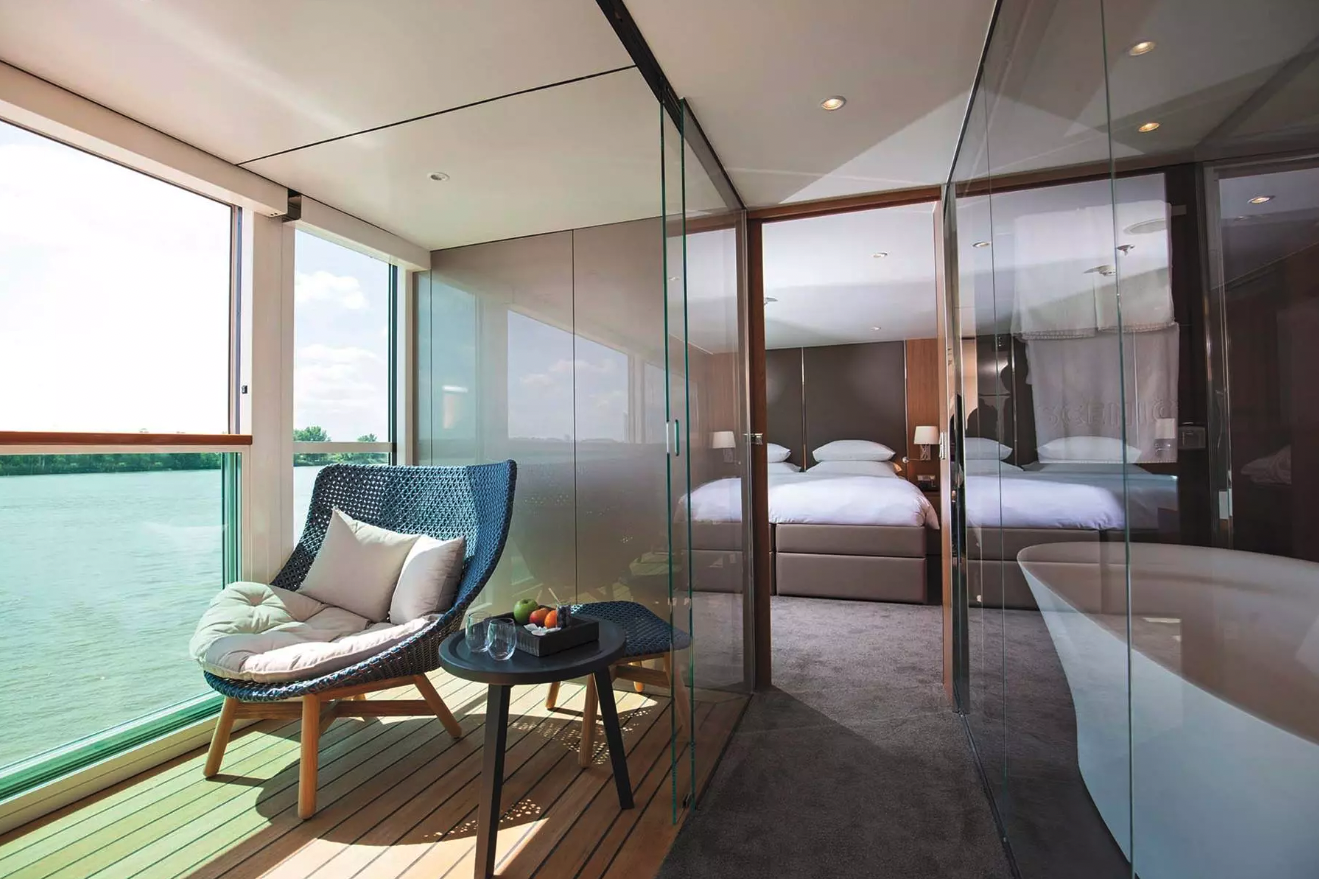
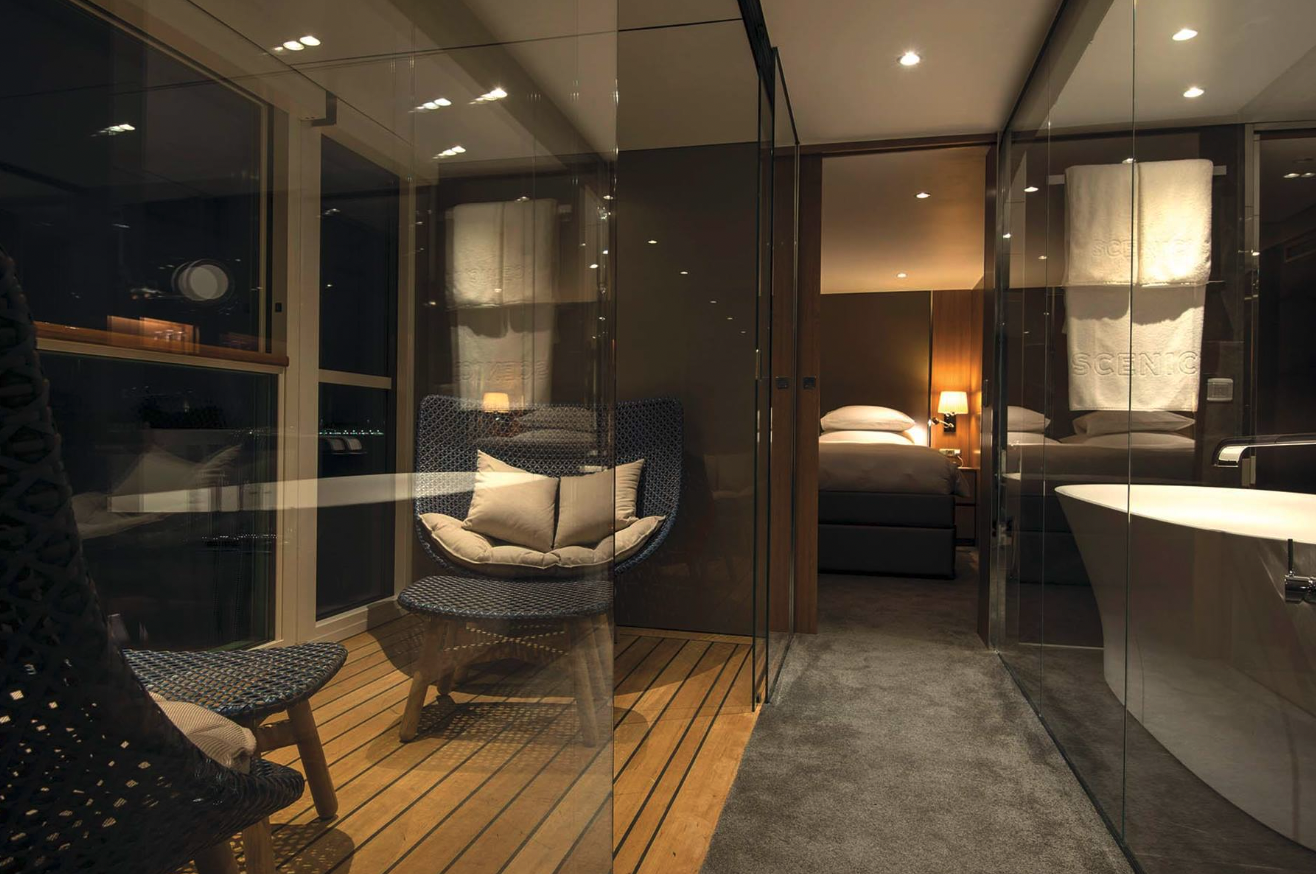
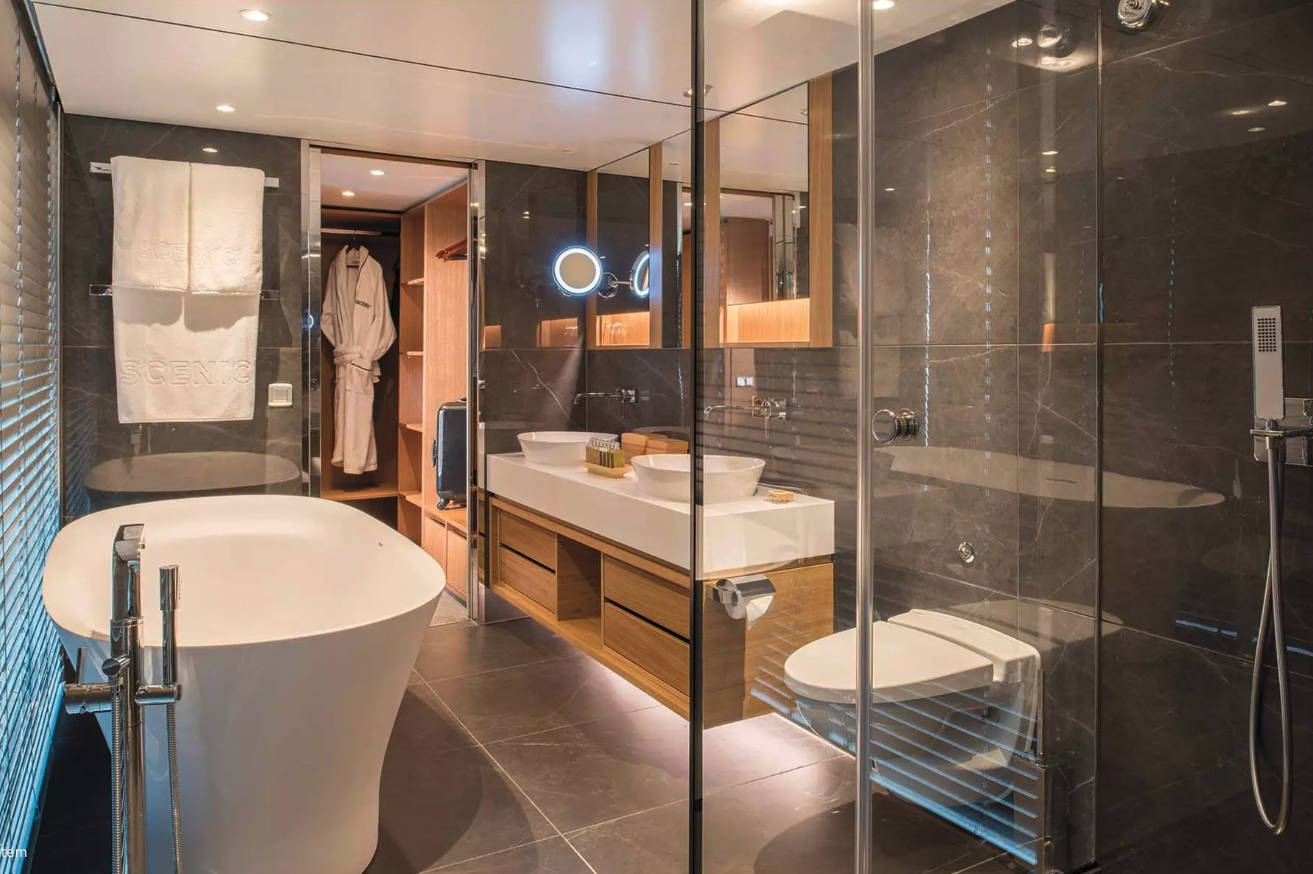

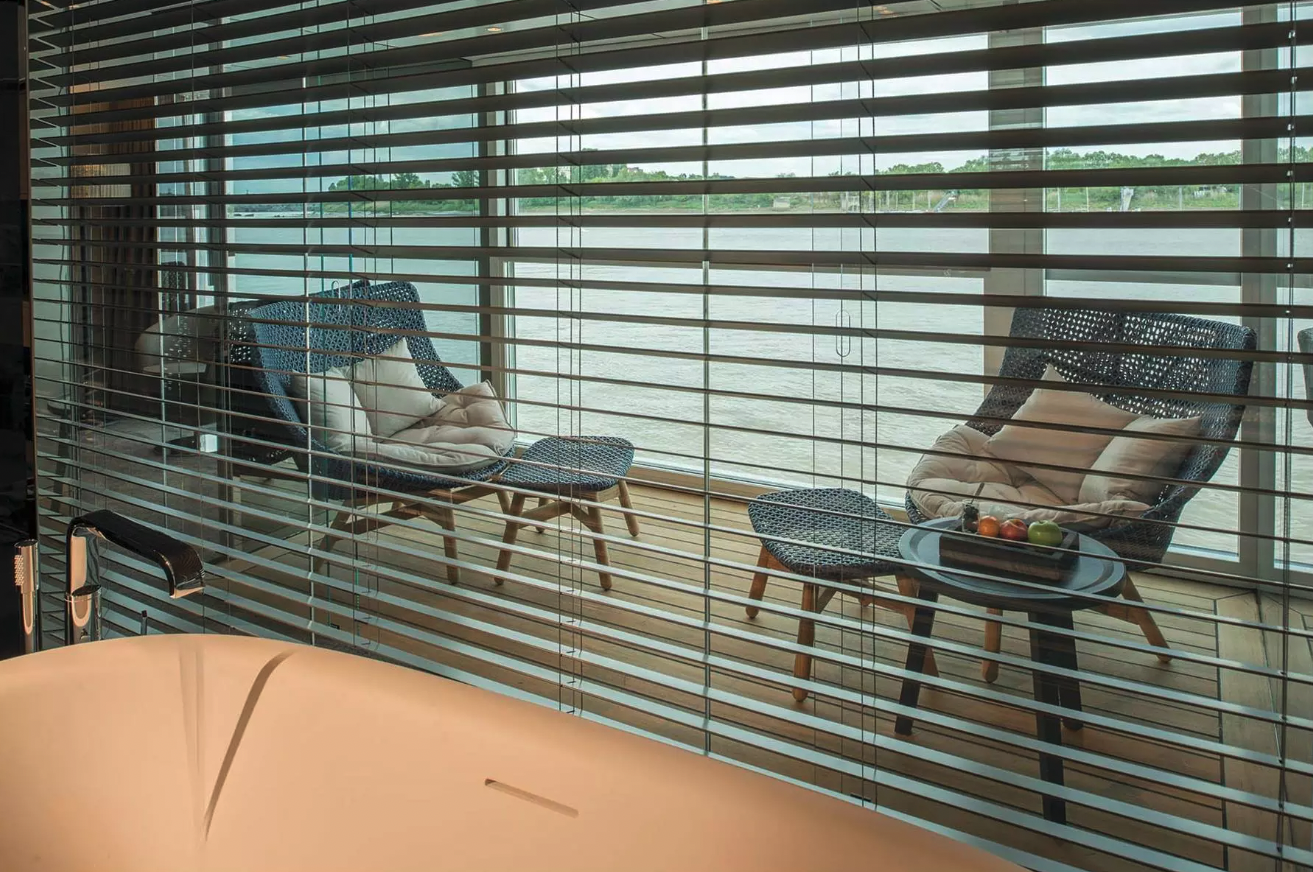

These Suites located on the Diamond Deck are the ultimate in luxury with more space, impeccable service, thoughtful touches, an outdoor balcony, lounge area and an oversized bathroom.
Suite Highlights
- A luxury queen sized Scenic Slumber Bed
- Scenic Sun Lounge, for wide-angle splendour at the press of a button
- Separate lounge area
- Oversized bathroom with separate shower and bath, and upgraded bathroom amenities
Amenities & Features
- Exclusive invitation to dine at Table La Rive or Table d’Or
- Priority reservations at selected dining venues
- A complimentary welcome bottle of champagne (750ml)
- €200 per suite on board credit for use in the Wellness Centre
- Private arrival and departure transfers in Europe*
- Personalised butler service, including unlimited complimentary laundry, shoeshine and valet, early morning tea and coffee services and a daily delivery of savoury and sweet canapés or fruit
- Mini bar, replenished daily
- Pillow menu, including anti-aging, low-allergy and memory-foam neck pillows
- Nightly turndown service
- Bathrobes and slippers
- In-suite safe

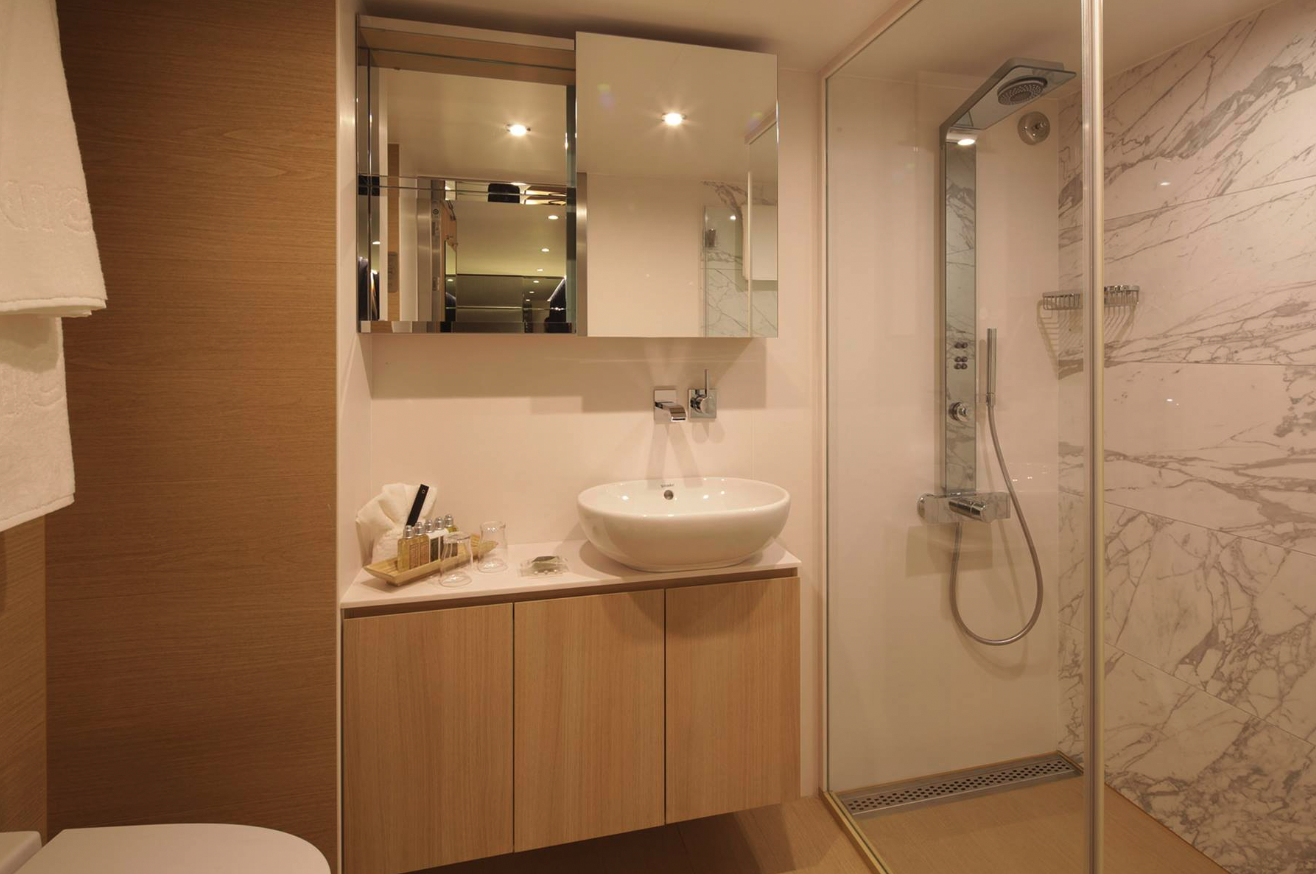
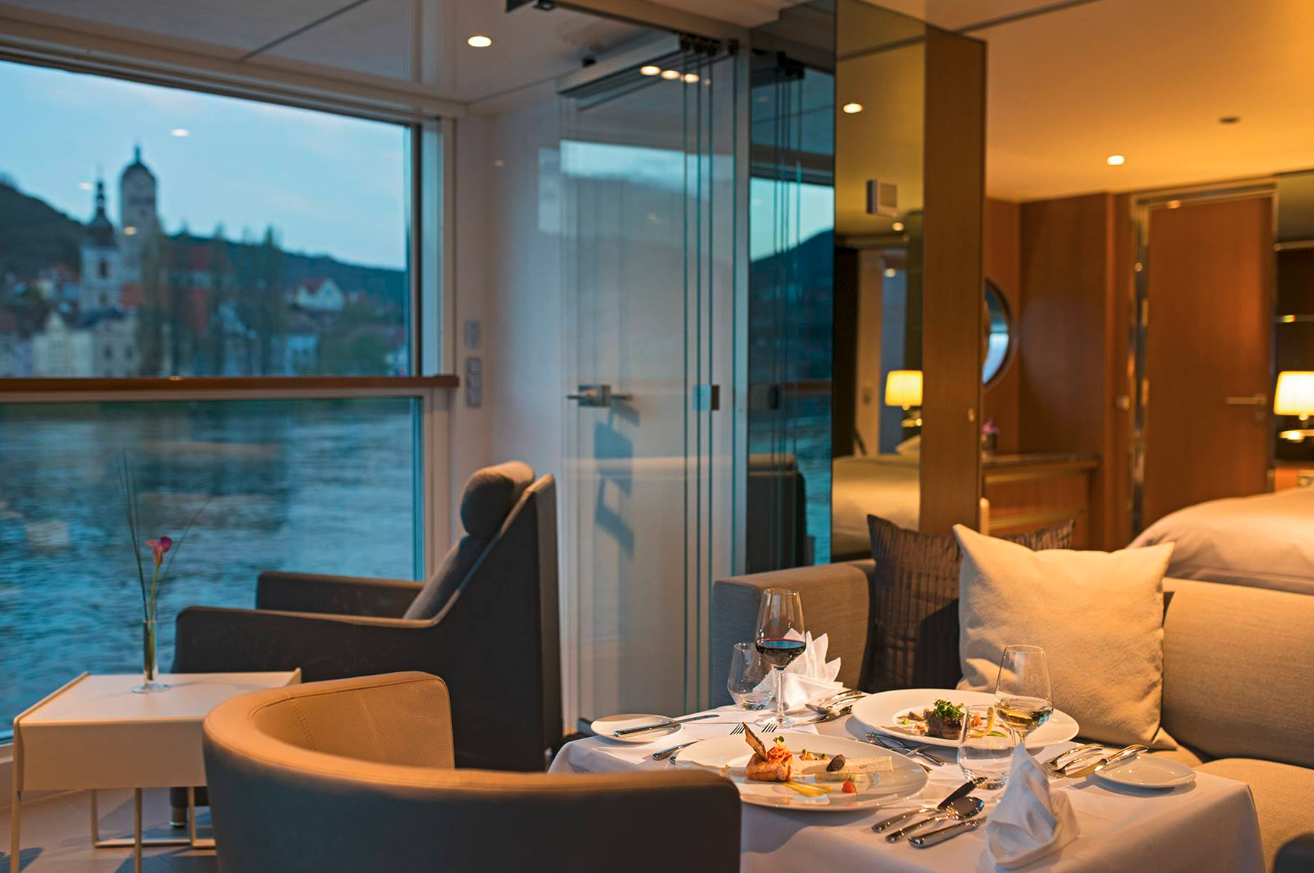
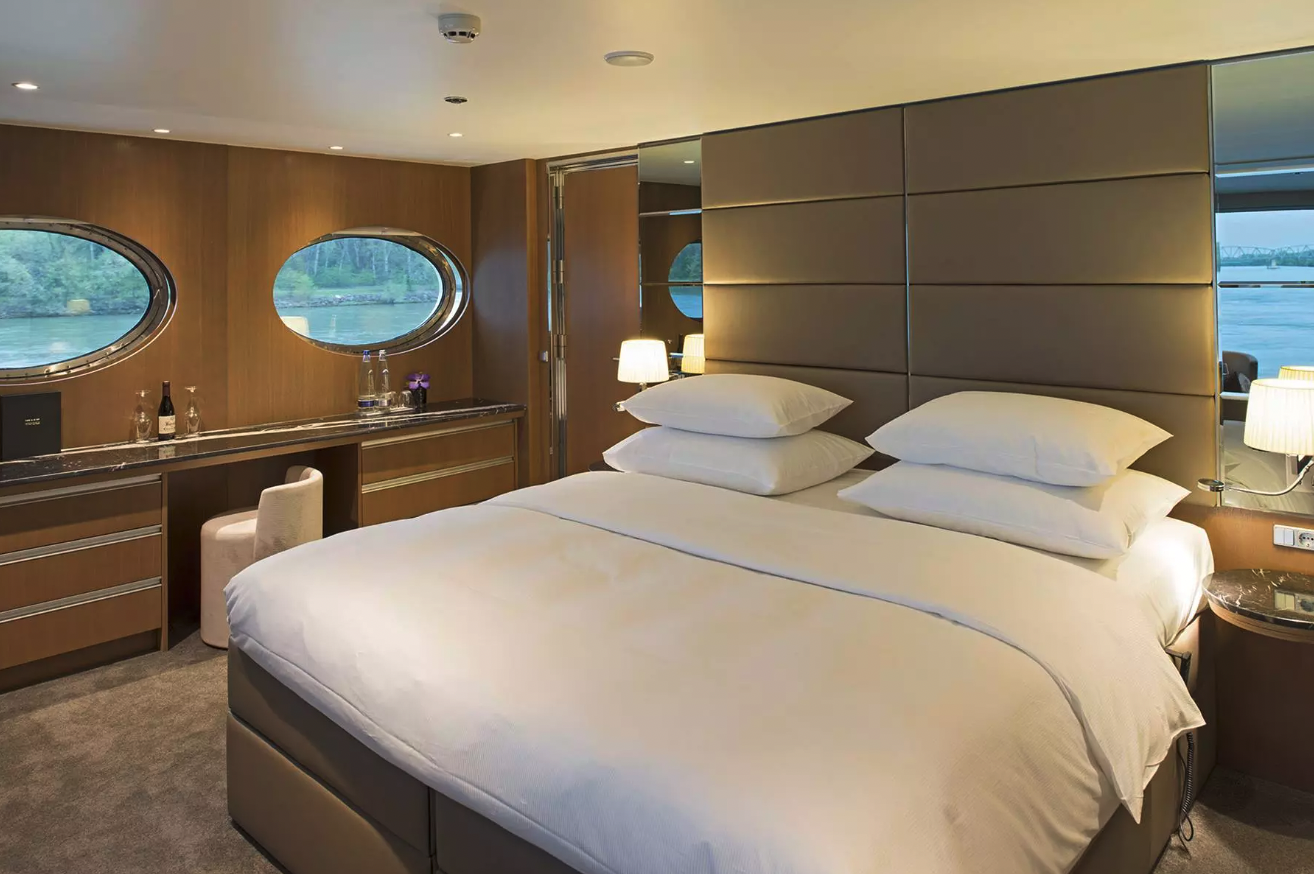
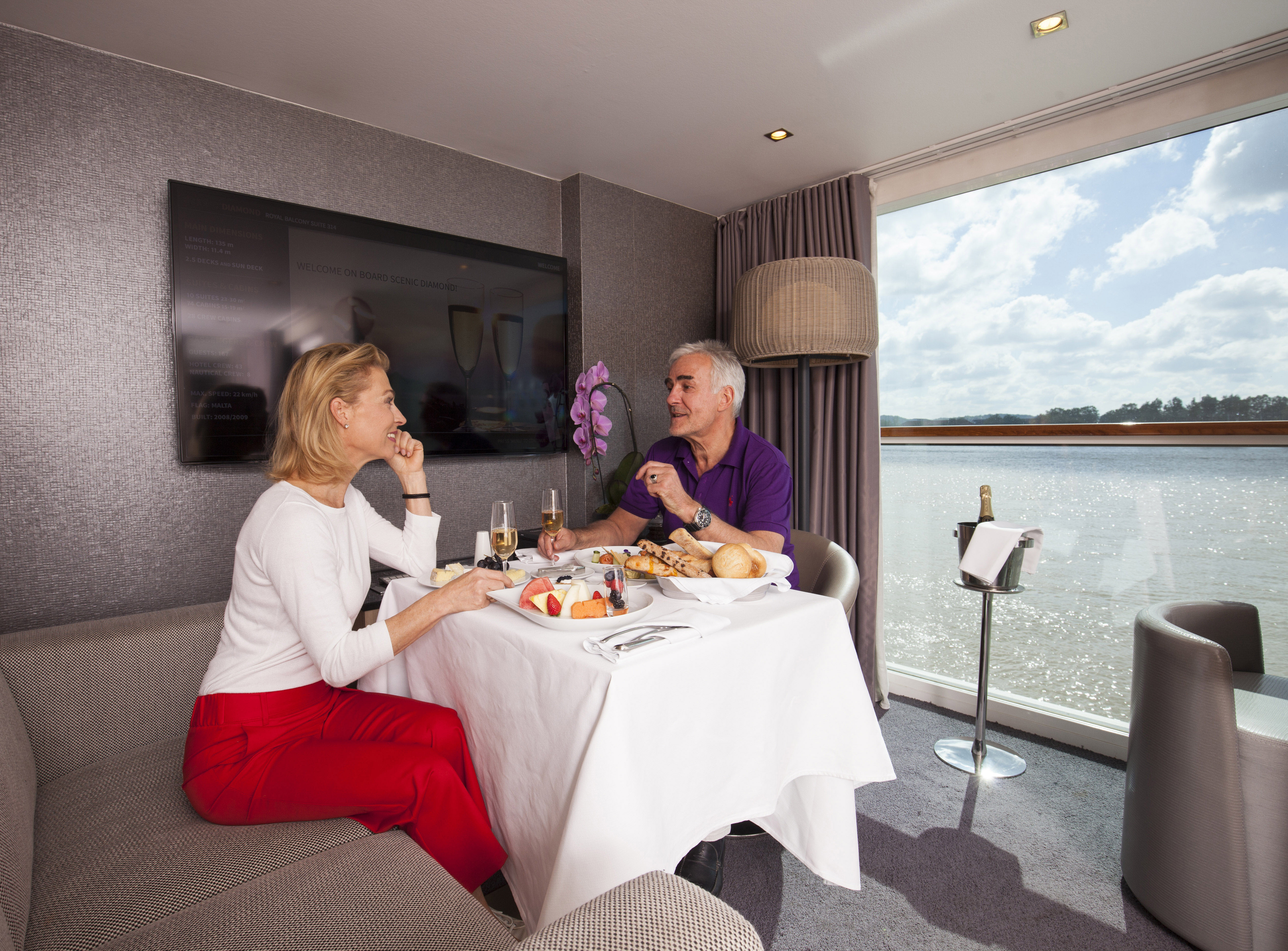
Located on the Sapphire and Diamond Decks these stylishly decorated suites feature a full-length outdoor balcony with the exclusive Scenic Sun Lounge and offer private bathrooms with a luxurious vanity basin and shower.
Room Highlights
- A luxury queen sized Scenic Slumber Bed
- Scenic Sun Lounge, for wide-angle splendour at the press of a button
- Spacious bathroom with luxurious amenities
Amenities & Features
- Personalised butler service for every suite
- Complimentary laundry service once per suite
- Early morning tea and coffee
- Beverage service in your suite
- Mini bar, replenished daily
- Pillow menu, including anti-aging, low-allergy and memory-foam neck pillows
- Nightly turndown service
- Bathrobes and slippers
- In-suite safe
- Shoeshine and valet service.

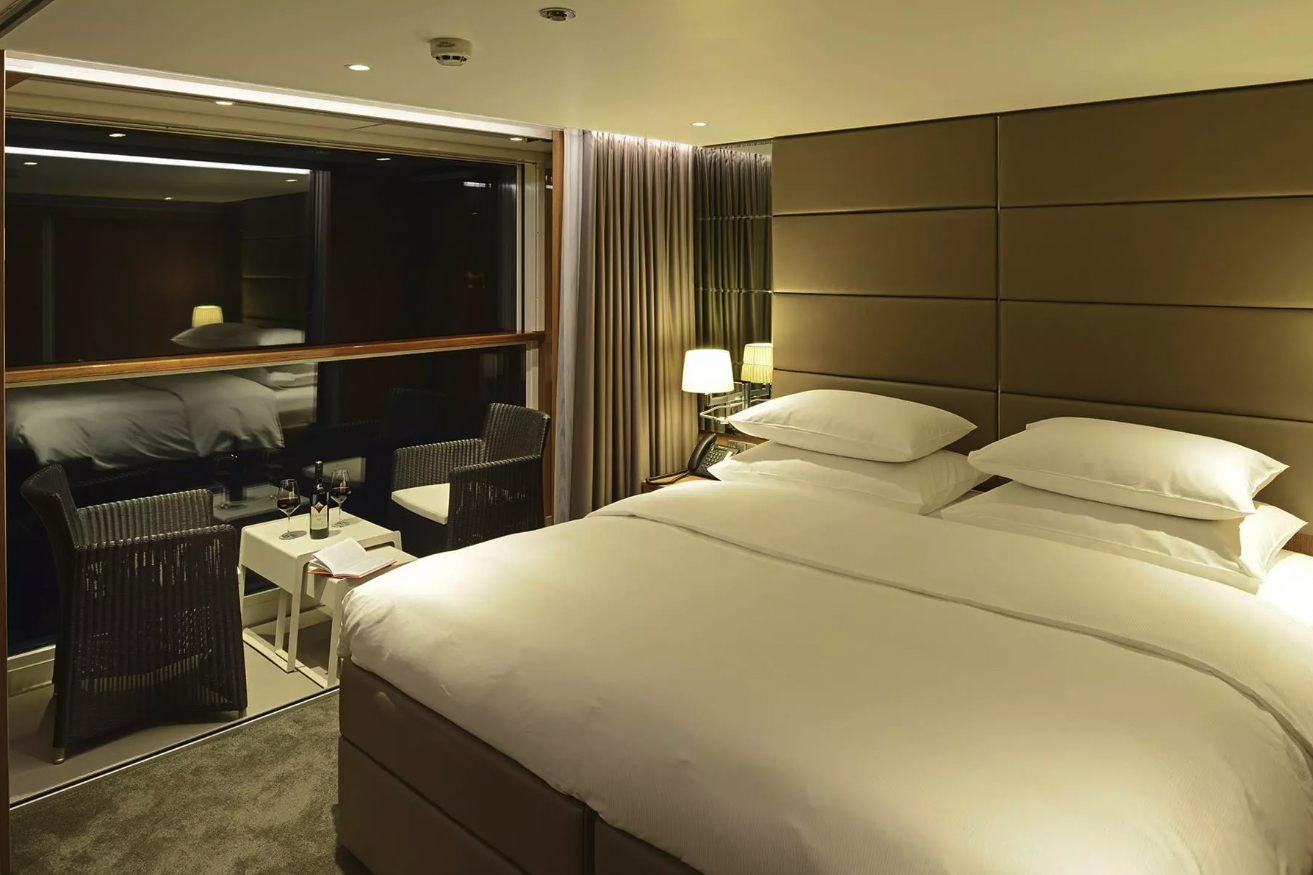
These Suites located on the Diamond Deck are the ultimate in luxury with more space, impeccable service, thoughtful touches, an outdoor balcony, lounge area and an oversized bathroom.
Suite Highlights
- A luxury queen sized Scenic Slumber Bed
- Scenic Sun Lounge, for wide-angle splendour at the press of a button
- Separate lounge area
- Oversized bathroom with separate shower and bath, and upgraded bathroom amenities
Amenities & Features
- Exclusive invitation to dine at Table La Rive or Table d’Or
- Priority reservations at selected dining venues
- A complimentary welcome bottle of champagne (750ml)
- €200 per suite on board credit for use in the Wellness Centre
- Private arrival and departure transfers in Europe*
- Personalised butler service, including unlimited complimentary laundry, shoeshine and valet, early morning tea and coffee services and a daily delivery of savoury and sweet canapés or fruit
- Mini bar, replenished daily
- Pillow menu, including anti-aging, low-allergy and memory-foam neck pillows
- Nightly turndown service
- Bathrobes and slippers
- In-suite safe
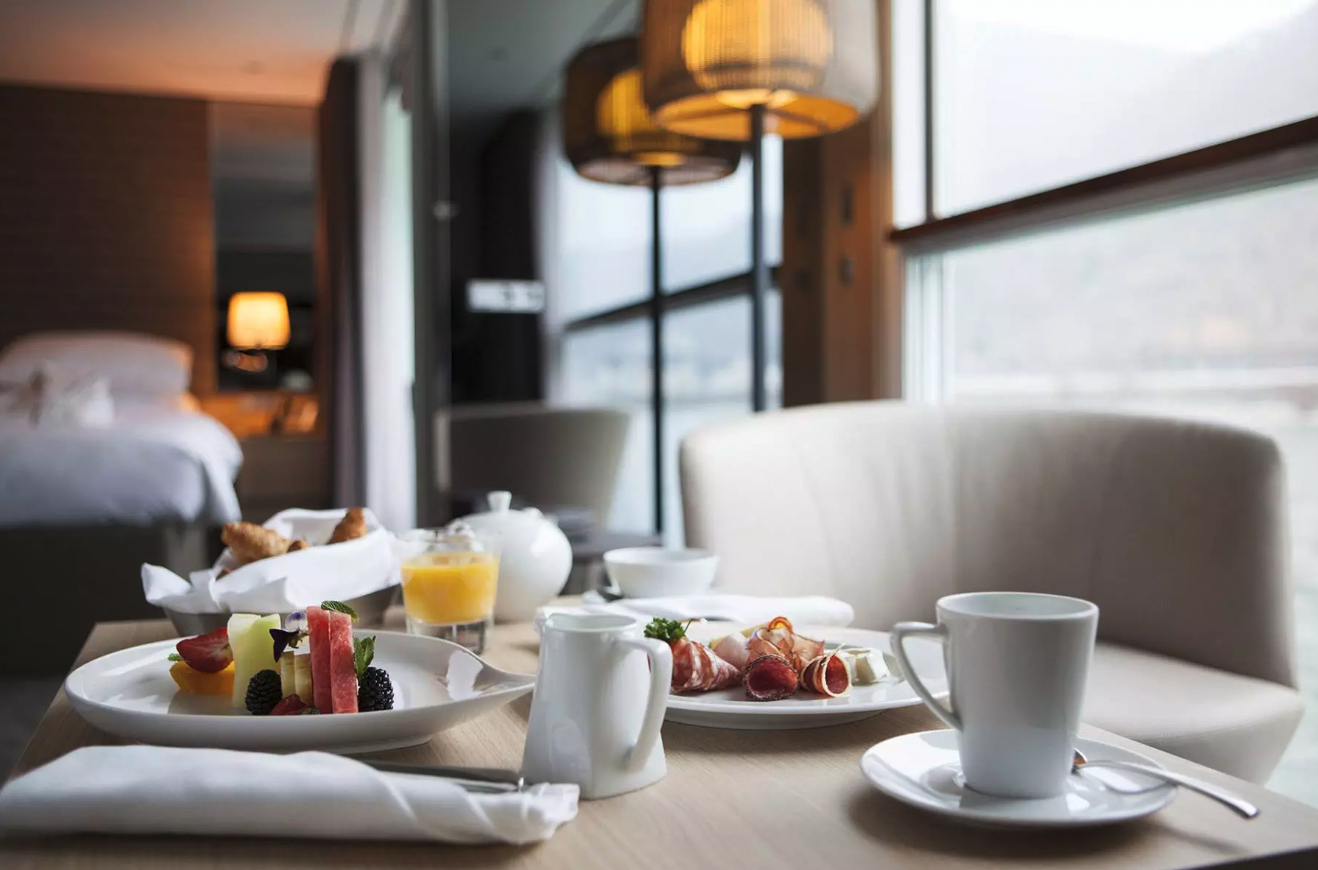



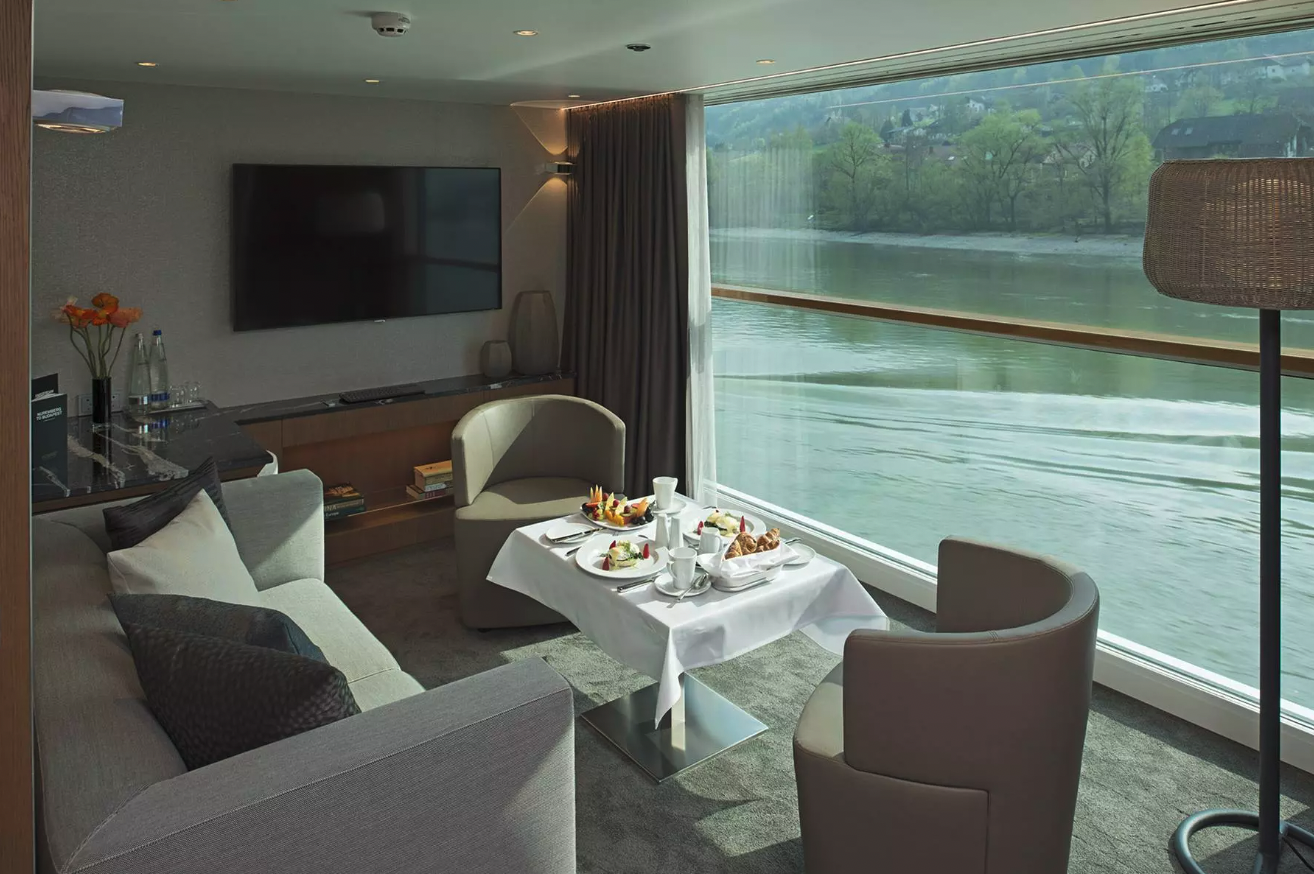
These spacious Suites, located on the Sapphire and Diamond Decks, have a private full-length balcony complete with a Scenic Sun Lounge and elegant en-suite bathrooms featuring a large vanity basin and shower.
Room Highlights
- A luxury queen-sized Scenic Slumber Bed
- Scenic Sun Lounge, your all weather balcony at the press of a button
- Spacious bathroom with luxurious amenities
Amenities and Features
- Exclusive invitation to dine at Table La Rive/Table d’Or
- Priority reservations at selected dining venues
- Personalised butler service for every suite
- Complimentary laundry service once per suite
- Daily pressing for two pieces of clothing
- In-suite breakfast with early morning tea and coffee services available
- Daily delivery of savoury and sweet canapés or fruit
- Mini bar, replenished daily
- Pillow menu, including anti-aging, low-allergy and memory-foam neck pillows
- Nightly turndown service
- Bathrobes and slippers
- In-suite safe

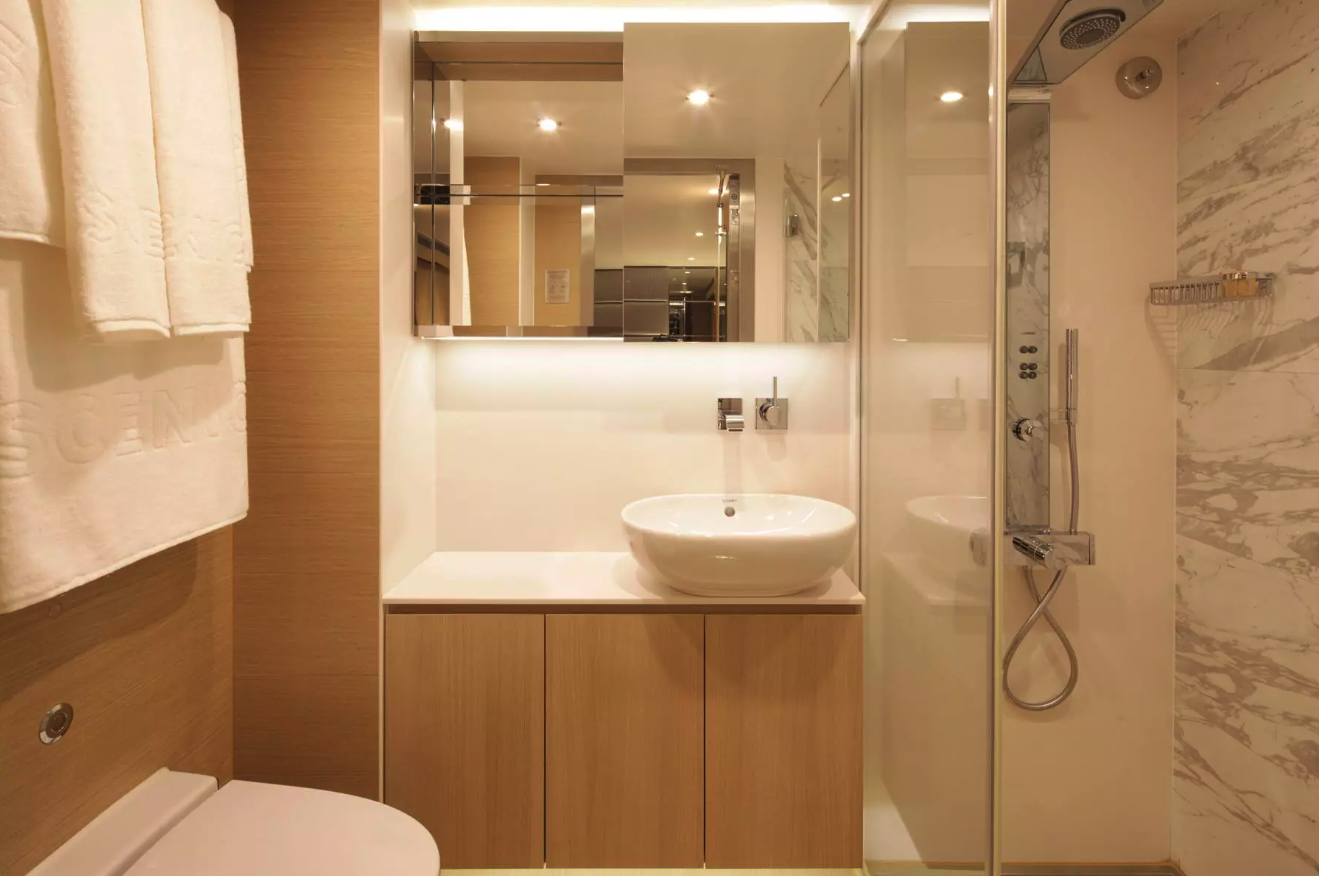
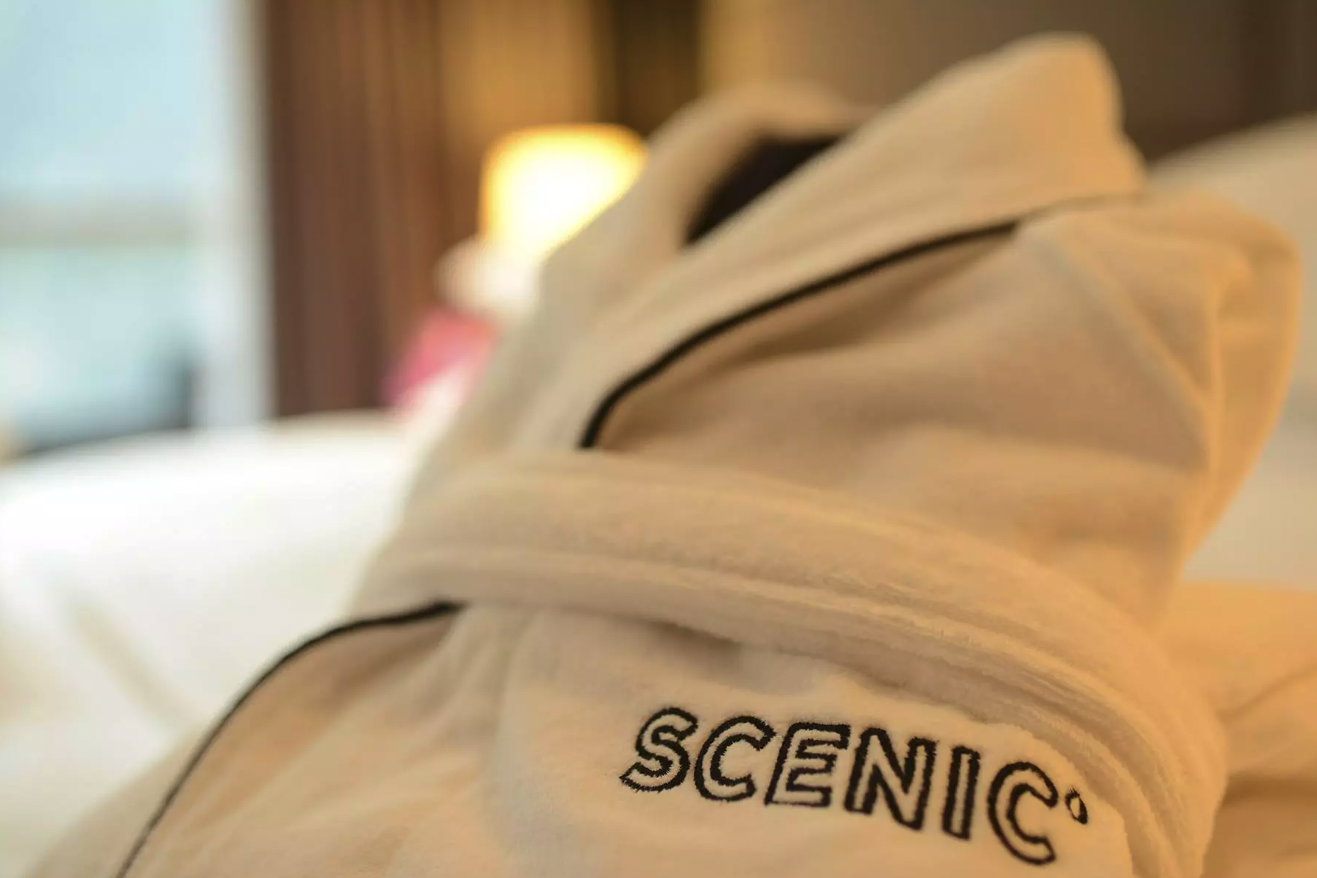

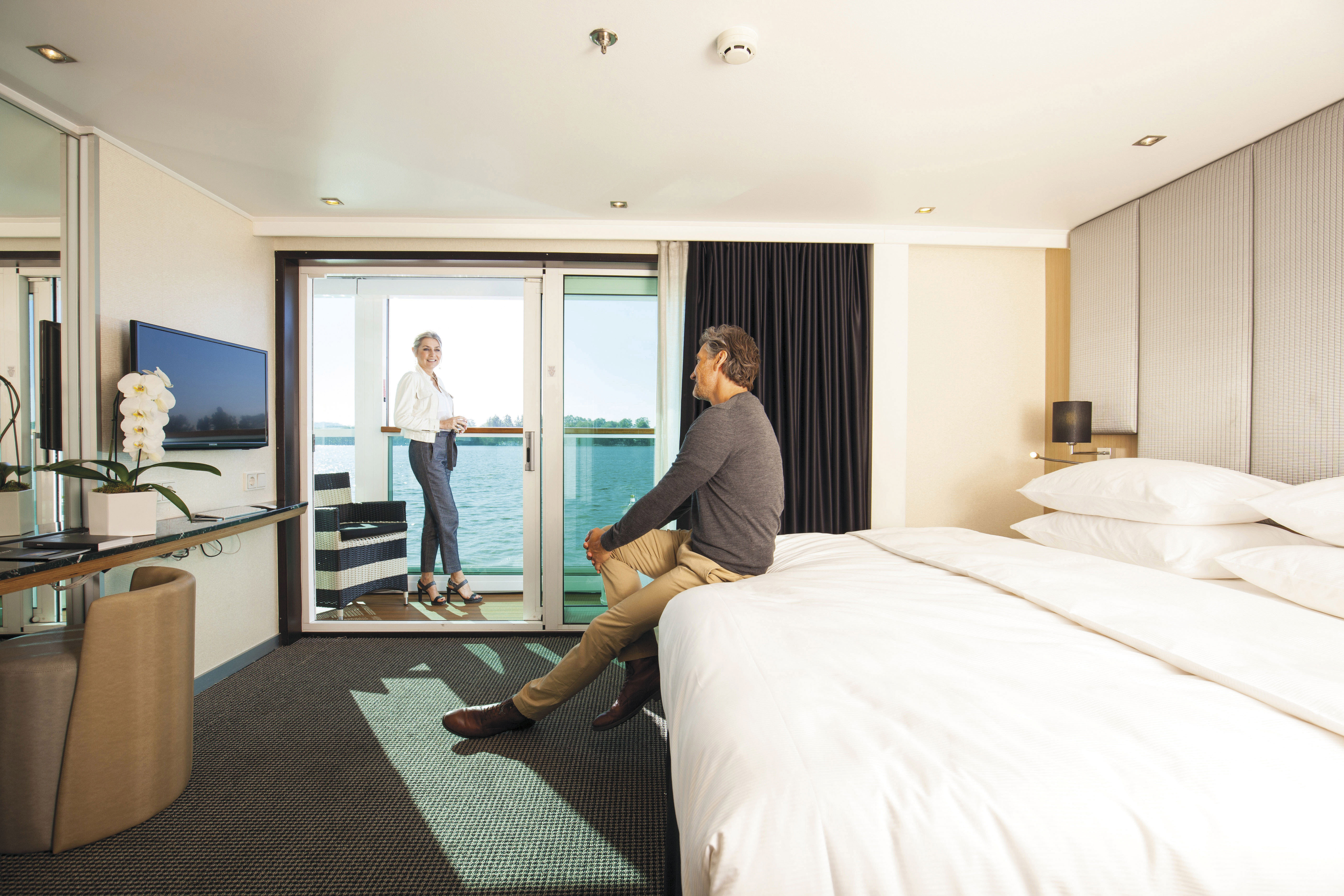
Located on the Sapphire deck this suite is perfect for the solo traveller. Enjoy fantastic views from your full size balcony complete with Scenic Sun Lounge. This cabin also includes an elegant bathroom with a luxurious vanity basin and shower.
Room Highlights
- A luxury queen sized Scenic Slumber Bed
- Scenic Sun Lounge, for wide-angle splendour at the press of a button
- Spacious bathroom with luxurious amenities
Amenities & Features
- Personalised butler service for every suite
- Complimentary laundry service once per suite
- Early morning tea and coffee
- Beverage service in your suite
- Mini bar, replenished daily
- Pillow menu, including anti-aging, low-allergy and memory-foam neck pillows
- Nightly turndown service
- Bathrobes and slippers
- In-suite safe
- Shoeshine and valet service.


Our Jewel Deck Suites provide a lovely introduction to river cruising. Comfortable and luxurious with the finest in amenities.
Room Highlights
- A luxury queen sized Scenic Slumber Bed
- Spacious bathroom with luxurious amenities
Amenities and Features
- Personalised butler service
- Complimentary laundry service once per suite
- Early morning tea and coffee
- Mini bar, replenished daily
- Pillow menu, including anti-aging, low-allergy and memory-foam neck pillows
- Shoeshine and valet service
- Nightly turndown service
- In-suite safe

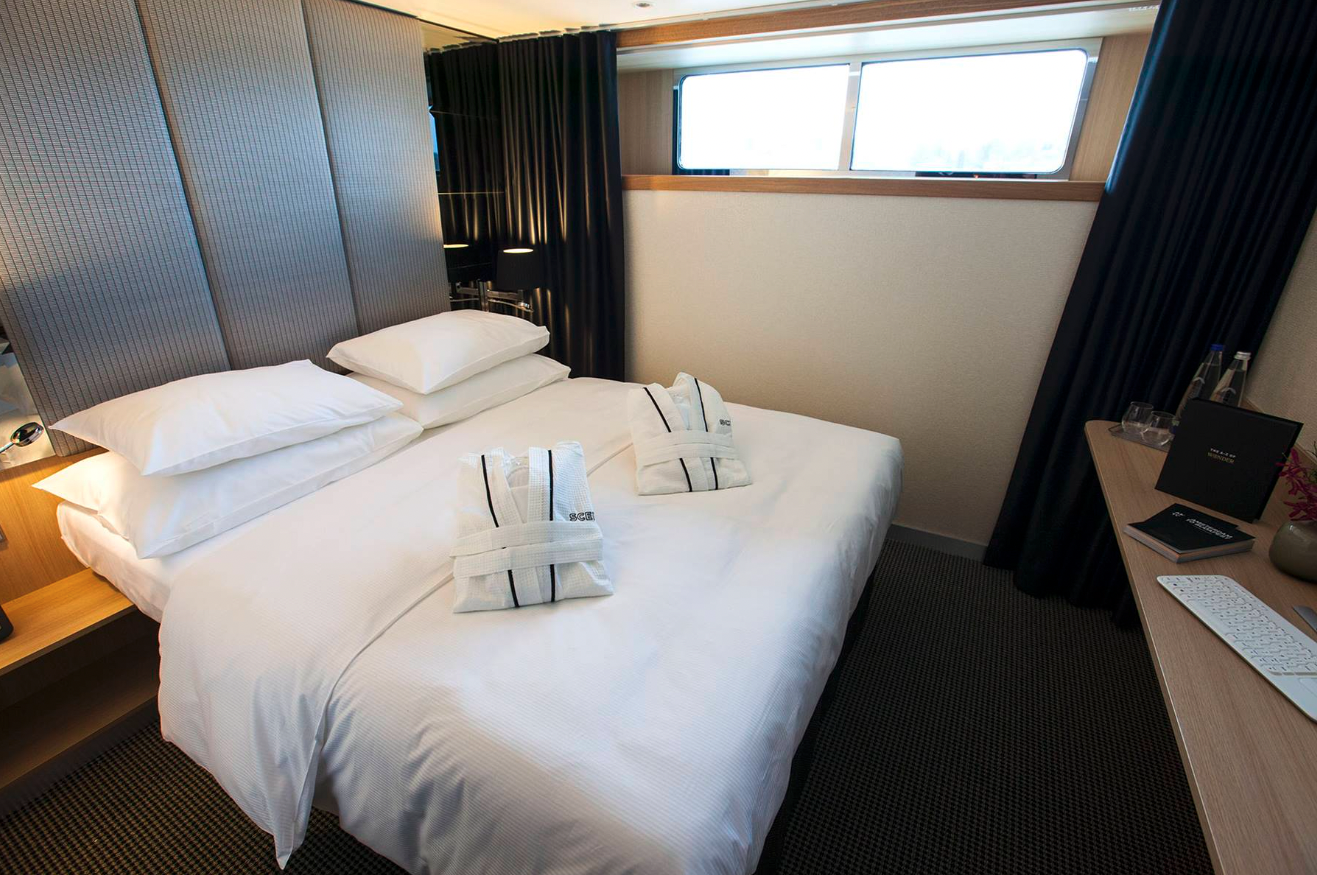
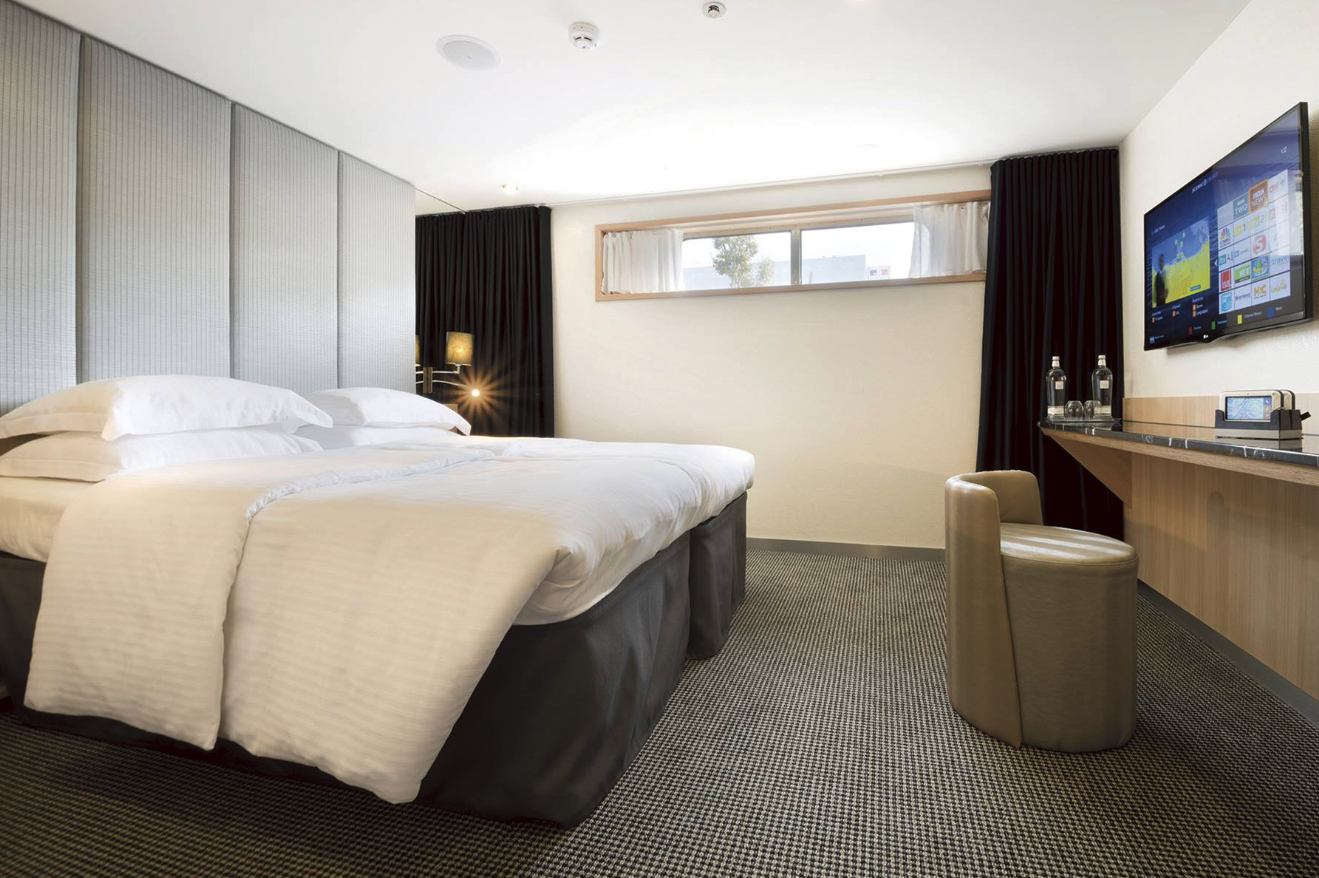
Scenic Sapphire
Cruising the Rhône, Saône, Dordogne and Garonne Rivers, these Space-Ships feature the finest of interiors and amenities including an exclusive Salt Therapy Room and our Scenic Culinaire cooking school.
These sleek ships are designed to navigate Europe’s rivers with ease, whilst providing abundant space to relax and indulge. Our ships provide a more personalised and intimate environment so you can sit back and enjoy the all-inclusive ultra-luxury experience.
Enjoy an ultra-luxury ship experience on board our luxurious Scenic Space-Ships in Europe. With only up to 163 guests, you will enjoy unrivalled amenities and an abundance of spaces to relax, while gliding along beautiful European waterways.
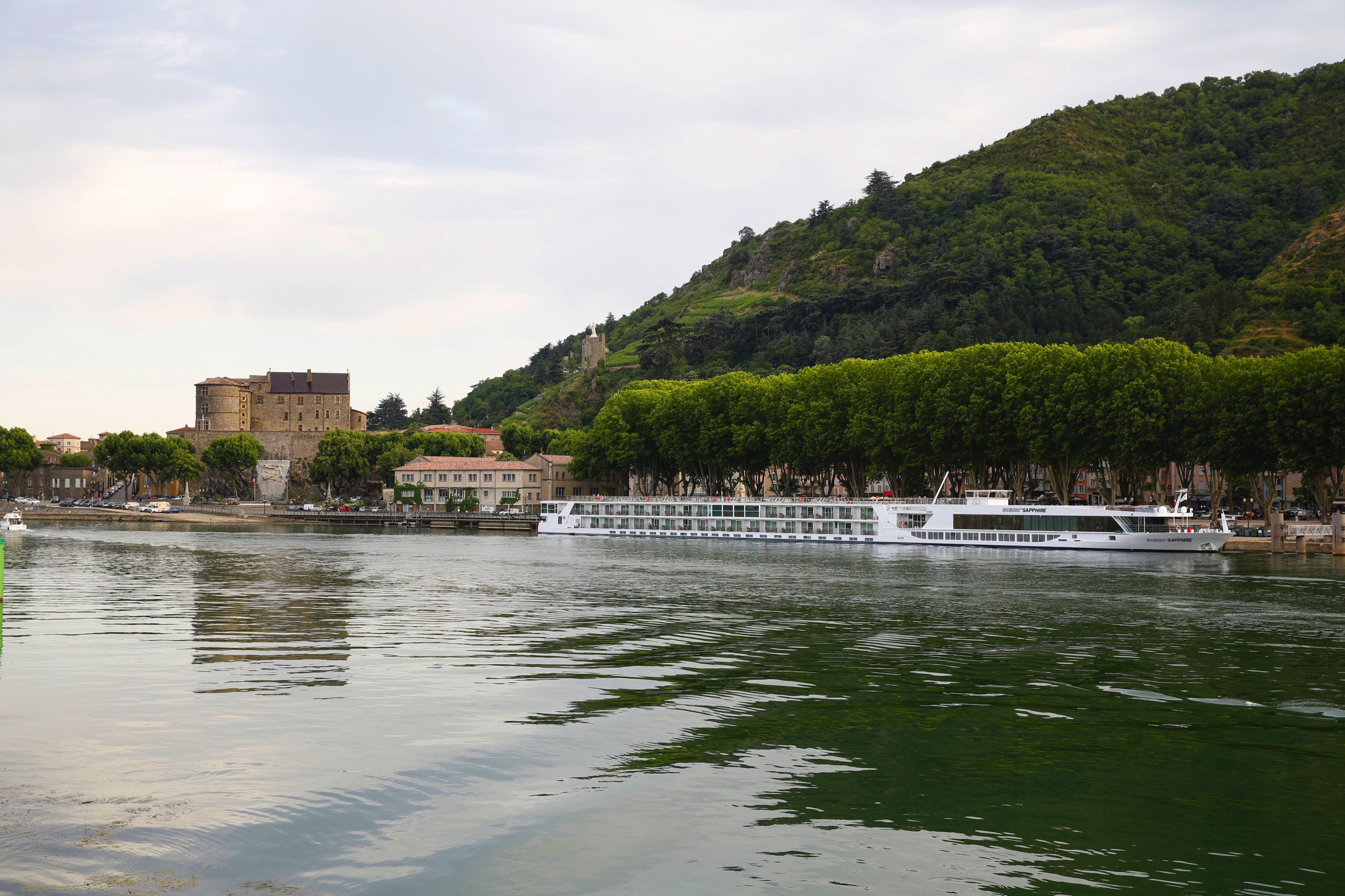
Ship Facts
| Launch Year | 2009 | ||||||
| Refit Year | 2024 | ||||||
| Language | en | ||||||
| Gross Tonnage | 2721 | ||||||
| Length | 135 | ||||||
| Width | N/A | ||||||
| Currency | EUR | ||||||
| Speed | N/A | ||||||
| Capacity | 147 | ||||||
| Crew Count | 57 | ||||||
| Deck Count | 4 | ||||||
| Cabin Count | 74 | ||||||
| Large Cabin Count | 0 | ||||||
| Wheelchair Cabin Count | 1 | ||||||
| Electrical Plugs |
|
Sun Deck
- Riverview Terrace
- Wheelhouse
- Sun Deck
- Walking Track
- Vitality Pool

Diamond Deck
- Panorama Deck
- L'Amour Restaurant
- River Cafe
- Panorama Lounge & Bar
- Gift Shop
- Reception
- Elevator
- Royal Owners Suite Cat RO
- Royal Balcony Suite Cat RA
- Junior Balcony Suite Cat RJ
- Royal Panorama Suite Cat RS
- Balcony Suite Cat A & P

Sapphire Deck
- Gallery
- Table La Rive
- Scenic Culinaire
- Crystal Dining
- Reception
- Elevator
- Junior Balcony Suite Cat BJ
- Single Balcony Suite Cat BS
- Balcony Suite Cat B, C

Jewel Deck
Wellness Area
- Fitness Centre
- Salt Therapy Lounge
- Standard Suite Cat E

Scenic Space-Ships feature up to five dining venues and our culinary team creates dishes inspired by the regional cuisines of the countries you cruise through. Whether it’s a three-course meal at Crystal Dining, a casual snack at River Café, or dining in the privacy of your suite, there is something for every palate and mood.
Crystal Dining
Enjoy à la carte menus for breakfast, lunch and dinner at Crystal Dining. Available on all Europe and South East Asia river cruises, this main restaurant offers a relaxed dining experience with local delicacies.
Table La Rive
Featuring a six-course degustation, the exclusive Table La Rive and Table d’Or on our European river cruises offers an intimate dining experience for only 10 guests per evening. Guests staying on the Diamond Deck for 10 nights or longer, as well as Royal and Junior Suite guests staying for up to nine nights, will be invited by our Executive Chef.
Riverview Terrace
Savour a light bite or refreshing aperitif on the Riverview Terrace, a charming open-air lounge space that’s ideal for sunlit afternoons on the river. With all-inclusive refreshments available throughout your river cruise, this is the perfect place for enjoying a little alfresco dining.
River Café
Offering a casual dining experience, you can enjoy all-day grazing options, light snacks and tasty treats to suit your schedule. The River Café is available on all Europe and South East Asia river cruises.
In-Suite Dining
L’Amour Restaurant
Available on board our Scenic Space-Ships in France, L'Amour boasts the best vantage point at the front of the ship showcasing sumptuous regional specialities from the freshest local produce.
- Authentic Italian, French or Portuguese dining
- A maximum of 32 guests an evening
- All guests will dine here at least once during their cruise
- Five-course menu with regional specialities, paired with wines from the region’s best wineries
- Floor-to-ceiling windows to enjoy the view as you dine
When you board a Scenic Space-Ship, you’ll unpack your bags and settle into your spacious and luxurious suite. Spend your days exploring the abundant spaces with multiple dining experiences, bars and lounges. Marvel at the panorama of Europe’s captivating waterways passing by.
Panorama Lounge & Bar
Explore our extensive wine list, relax with a coffee or catch-up with new-found friends at the Panorama Lounge & Bar. This is the main bar lounge on-board our Space-Ships, and it’s tastefully furnished to guarantee your comfort and enjoyment.
The Sun Deck
Make the most of every ray of sunshine with our purpose-built Sun Deck. Complete with deck chairs and a games area, this is a place to kick back and enjoy the view as your Space-Ship travels to its next destination.
Reception
A warm welcome awaits at your reception area, which you’ll find in the central atrium on board our Space-Ships. Our crew are on hand 24 hours a day to help with whatever you need, while the area also doubles as the meeting point for the day’s shore excursions.
Wheelhouse
The Wheelhouse is where our trained crew pilot and navigate your Space-Ship, negotiating France’s beloved waterways with the utmost care and precision. Feel free to stop by and find out what goes on behind the scenes.
Gallery
Our Gallery spaces are dedicated to showcasing works by local artists, so you feel connected to people and place in every destination. We believe little touches like this are what make our European river cruises so special.